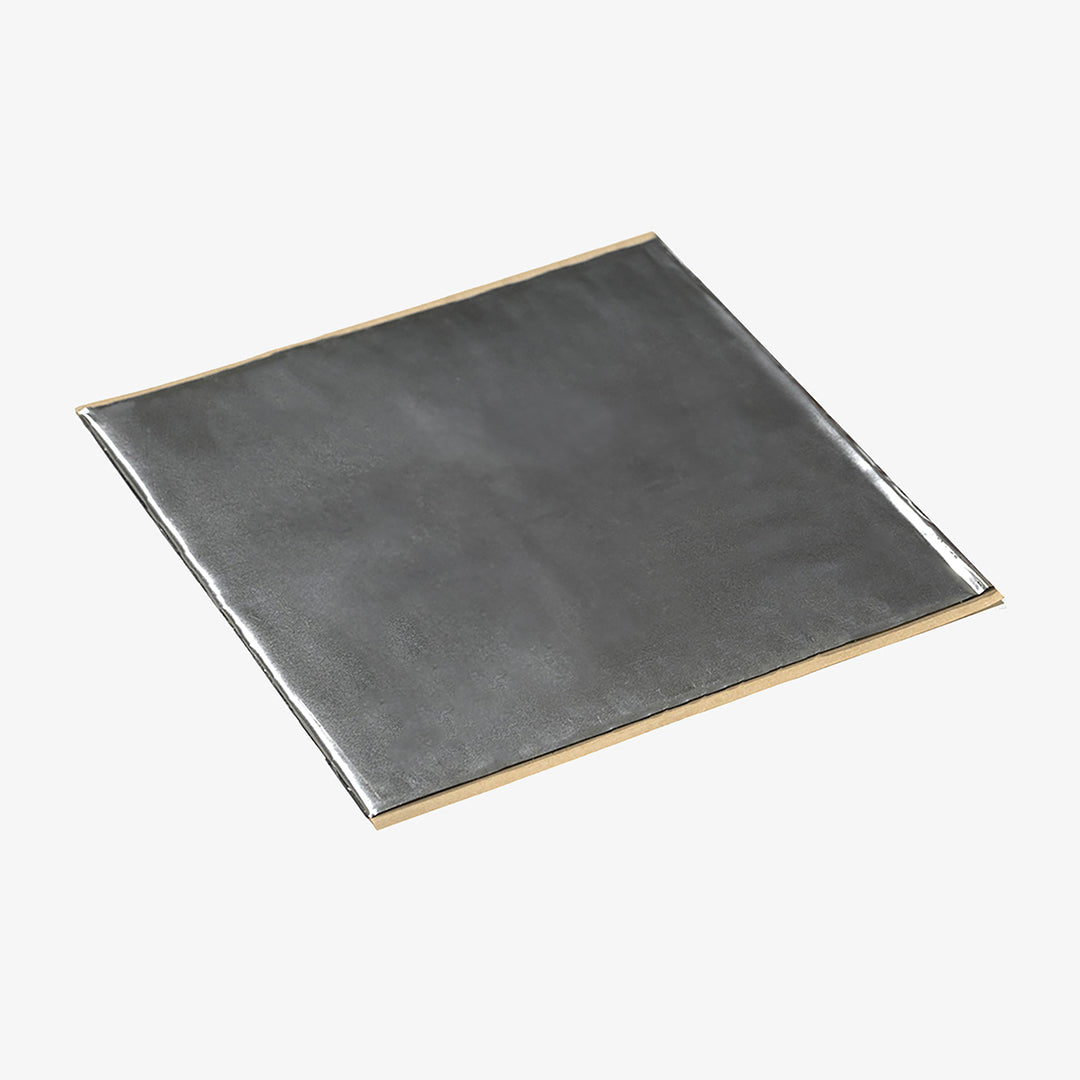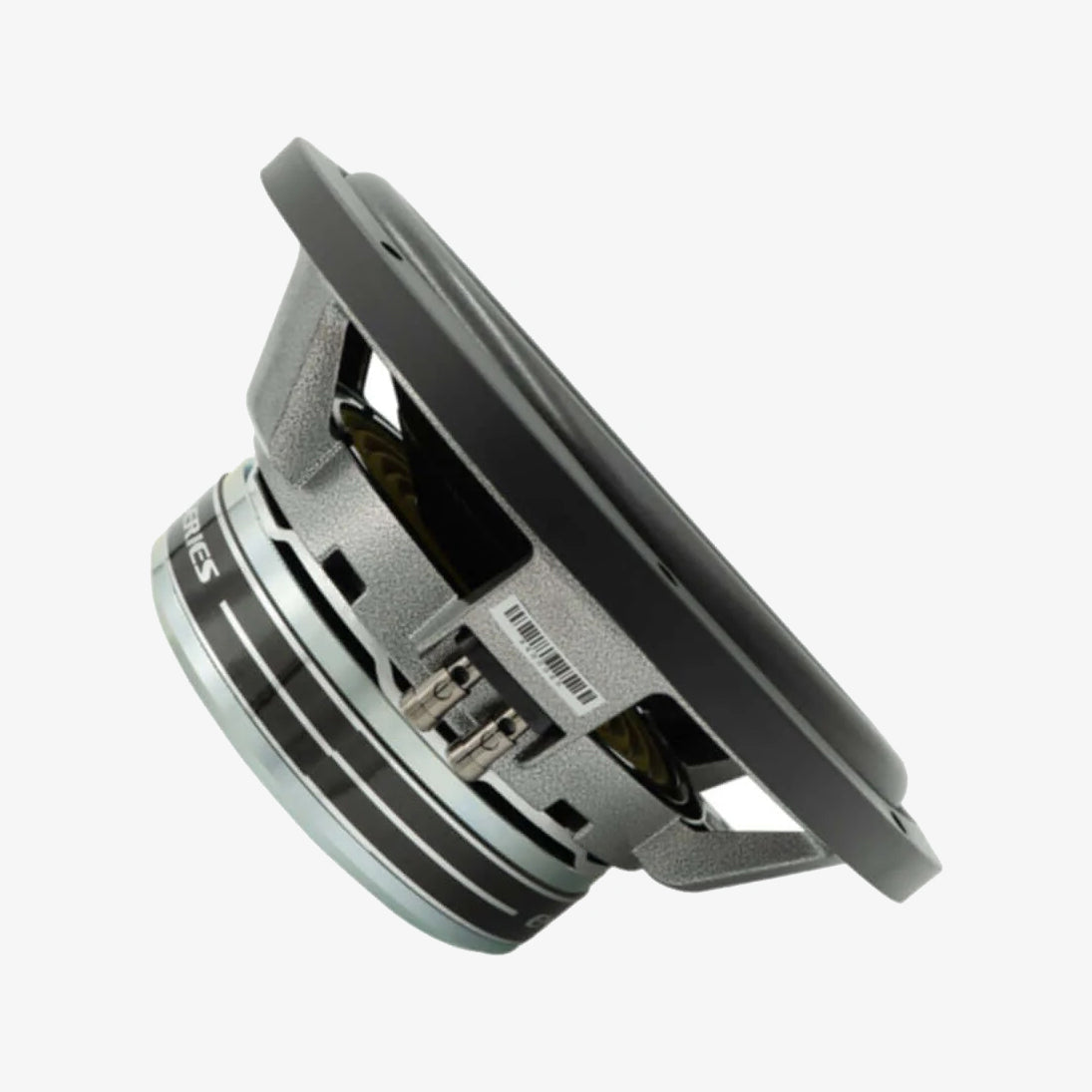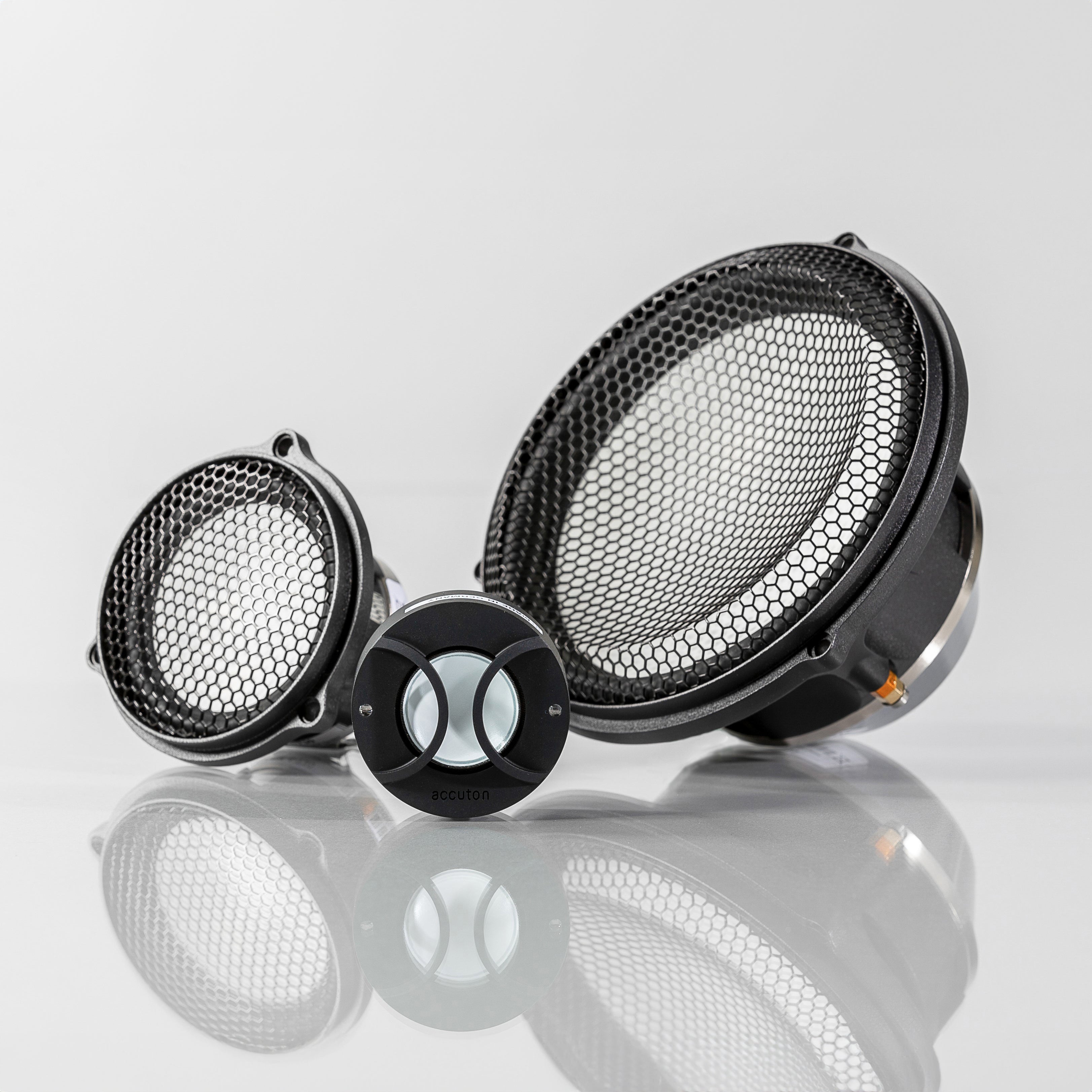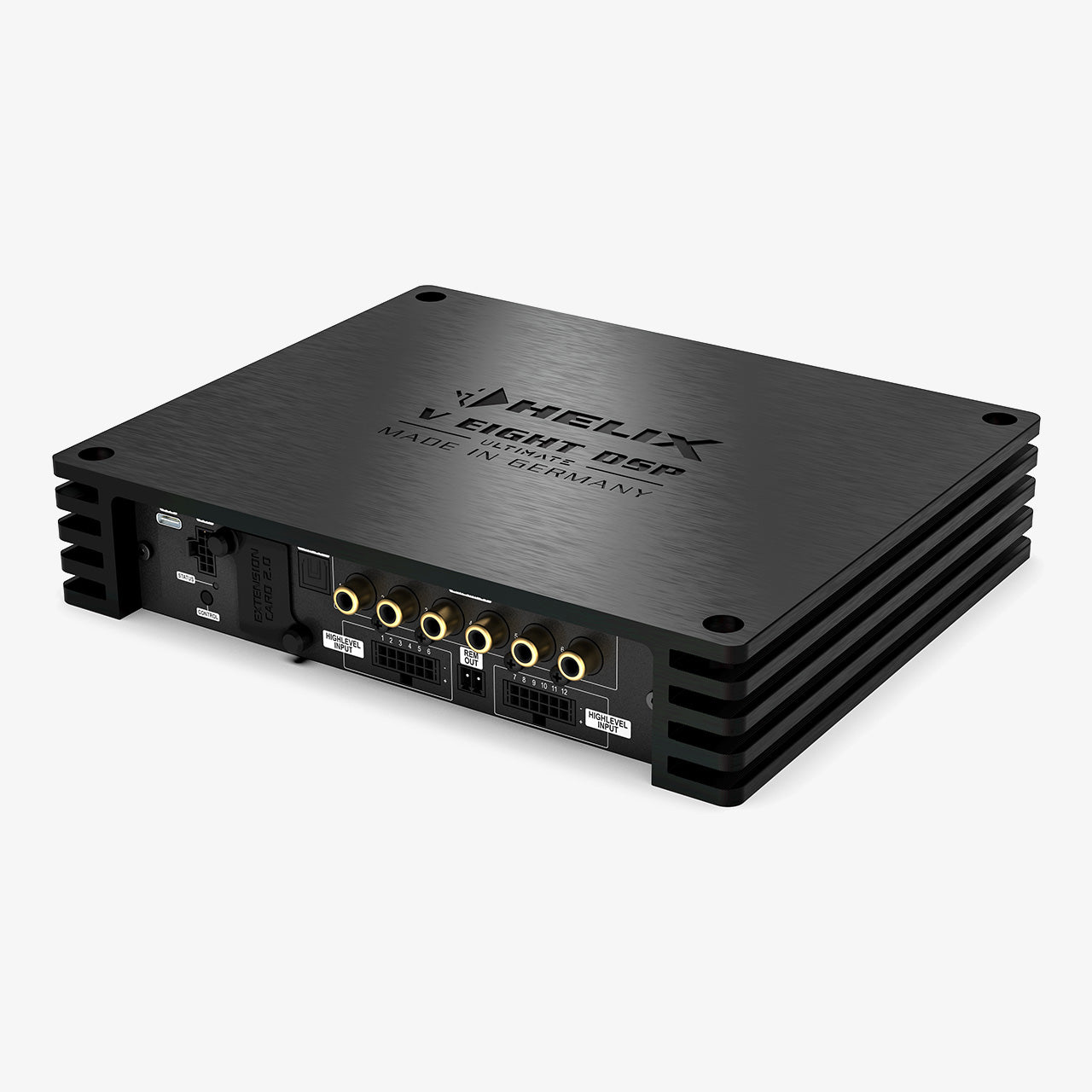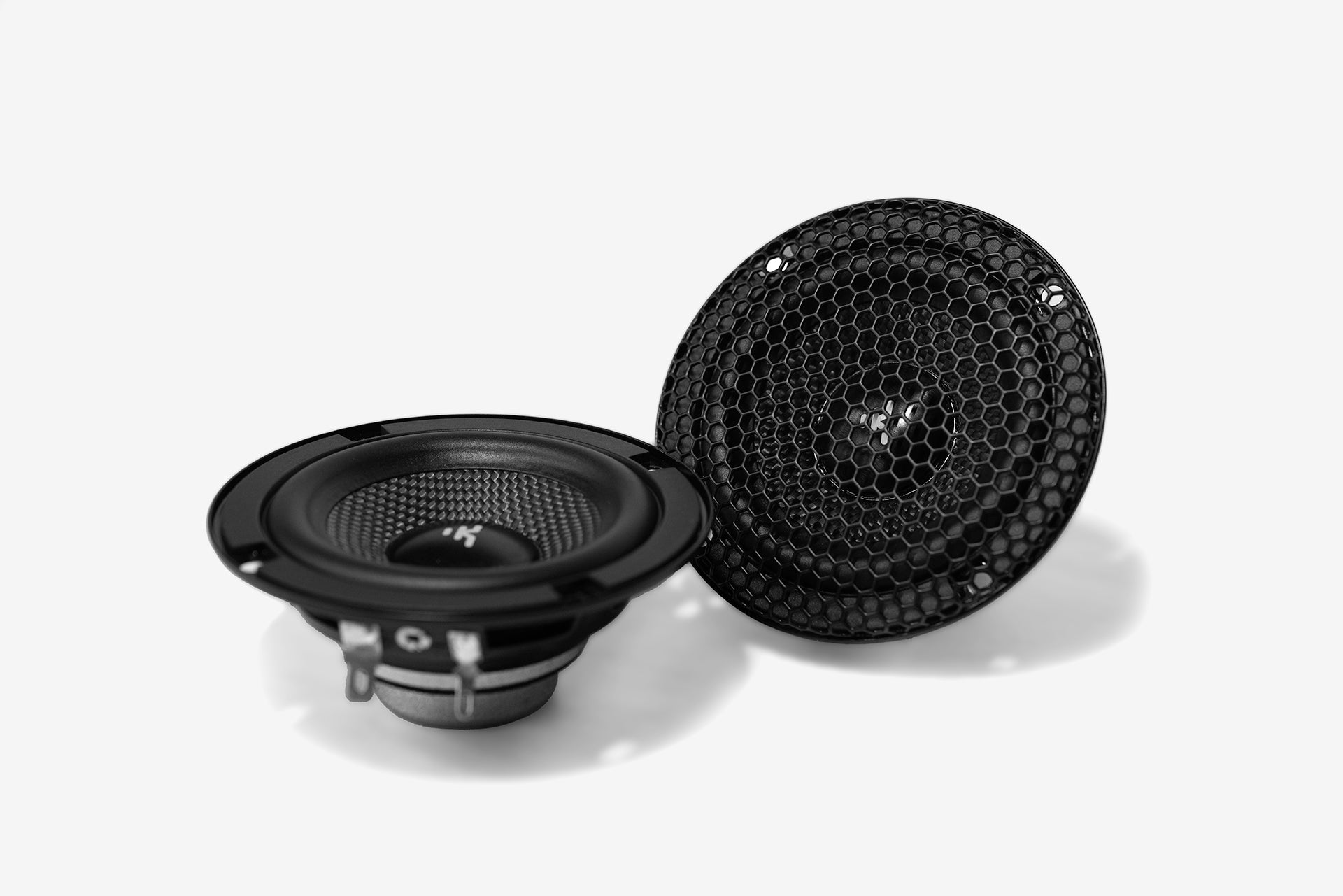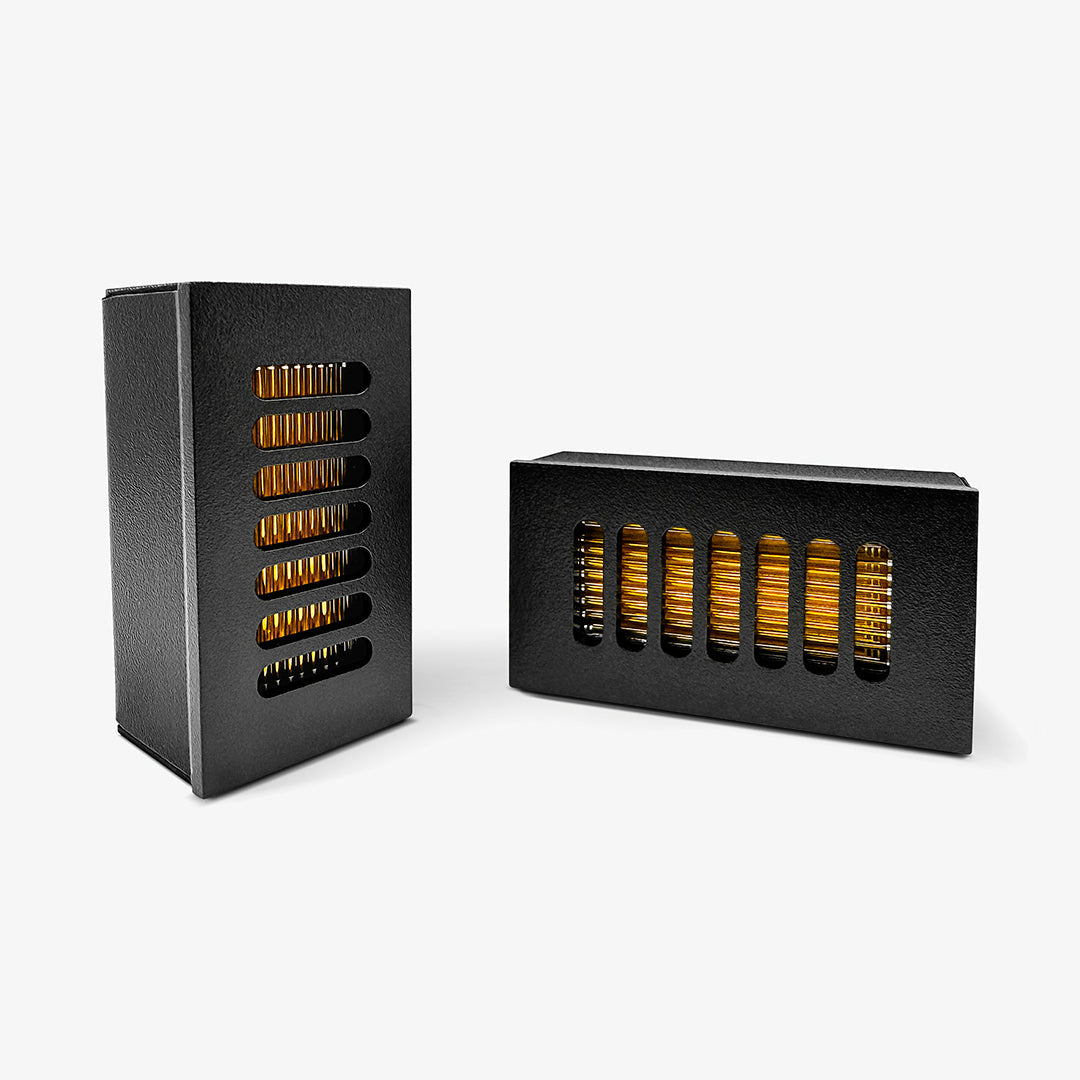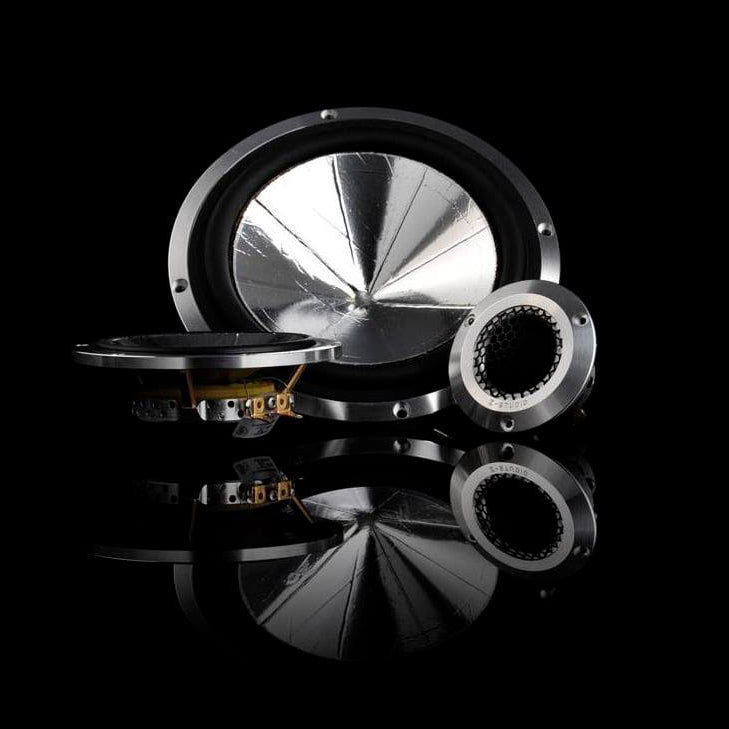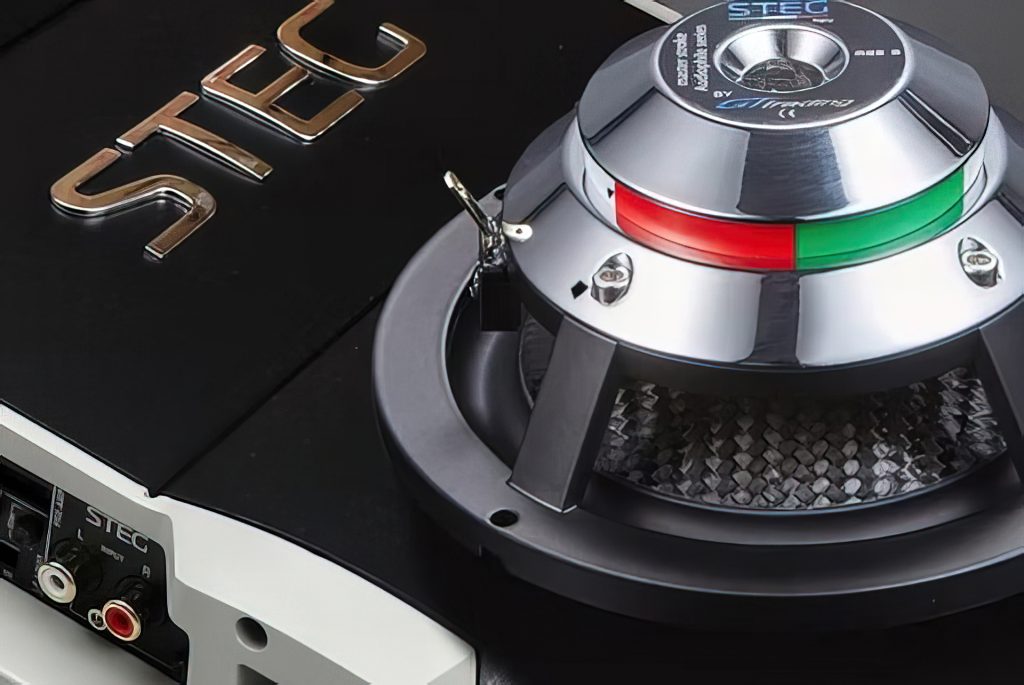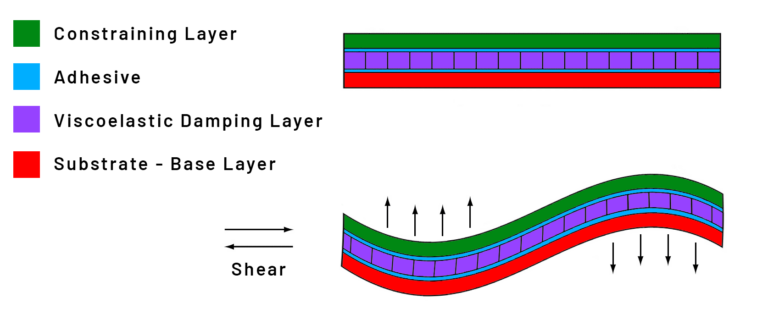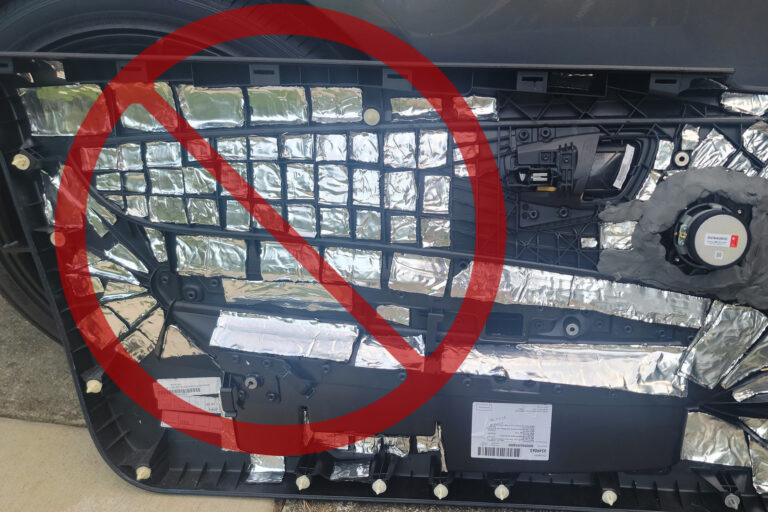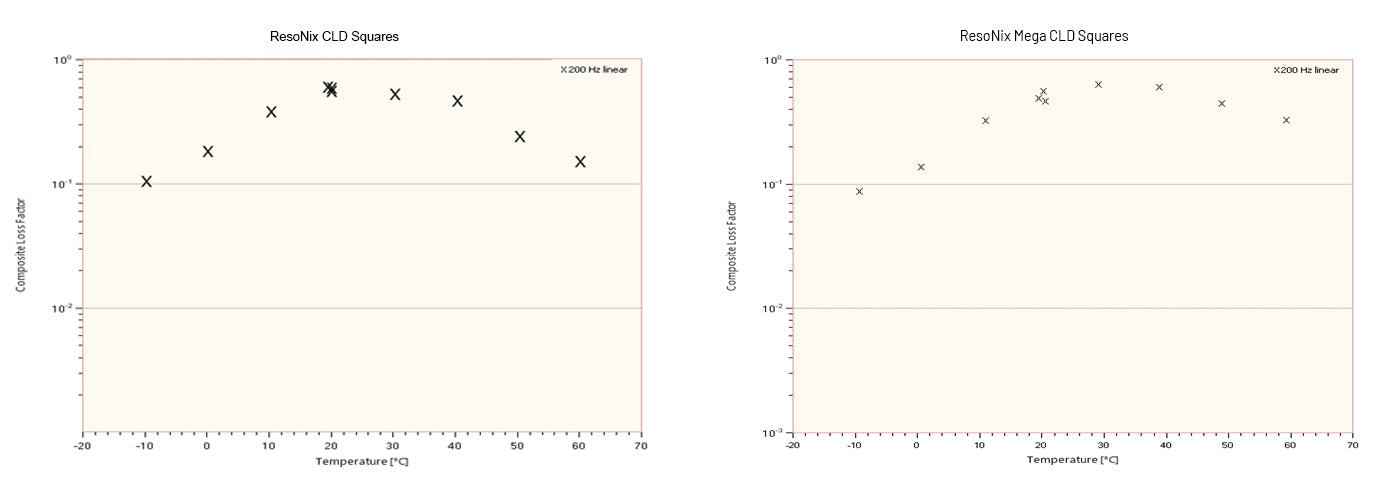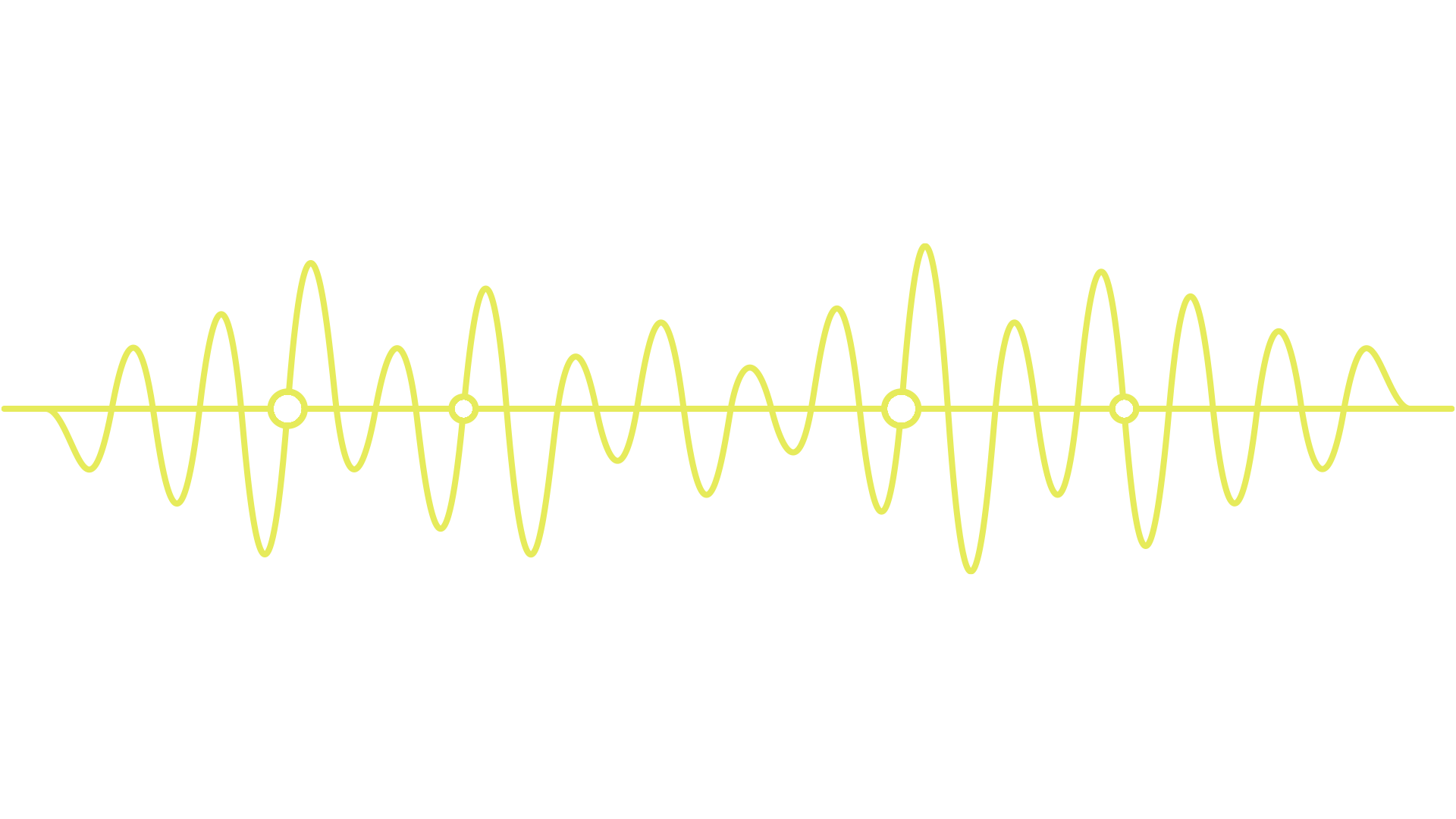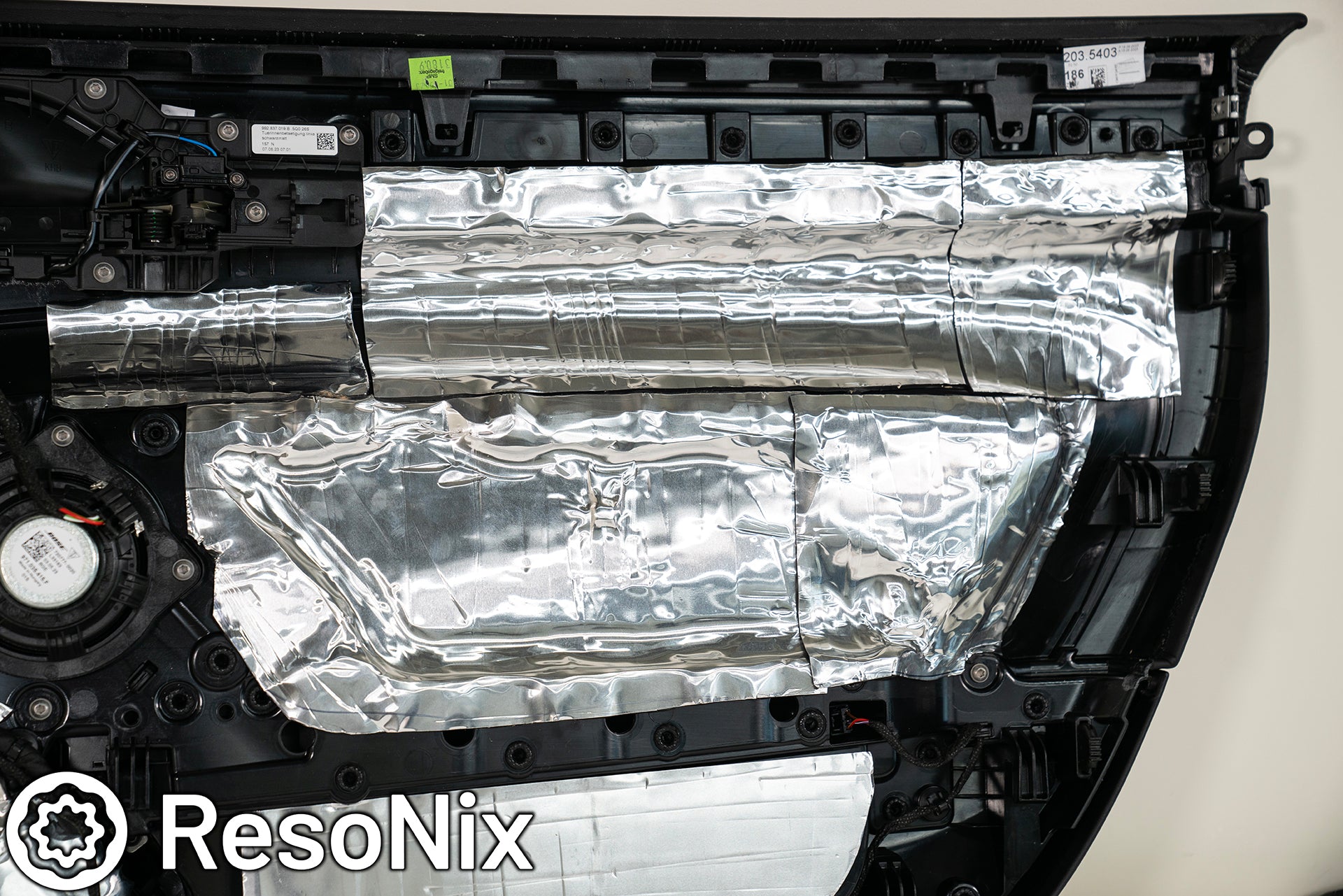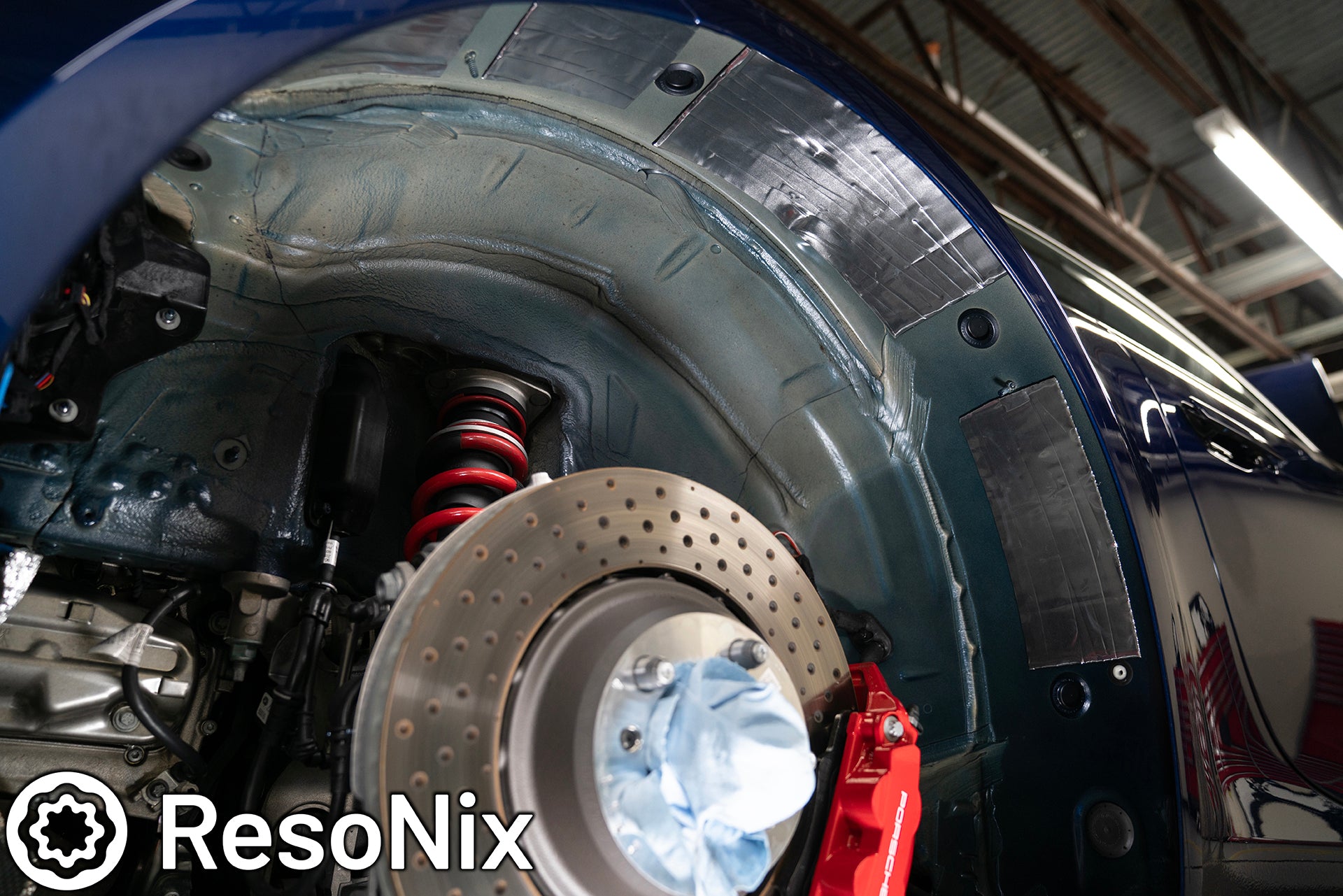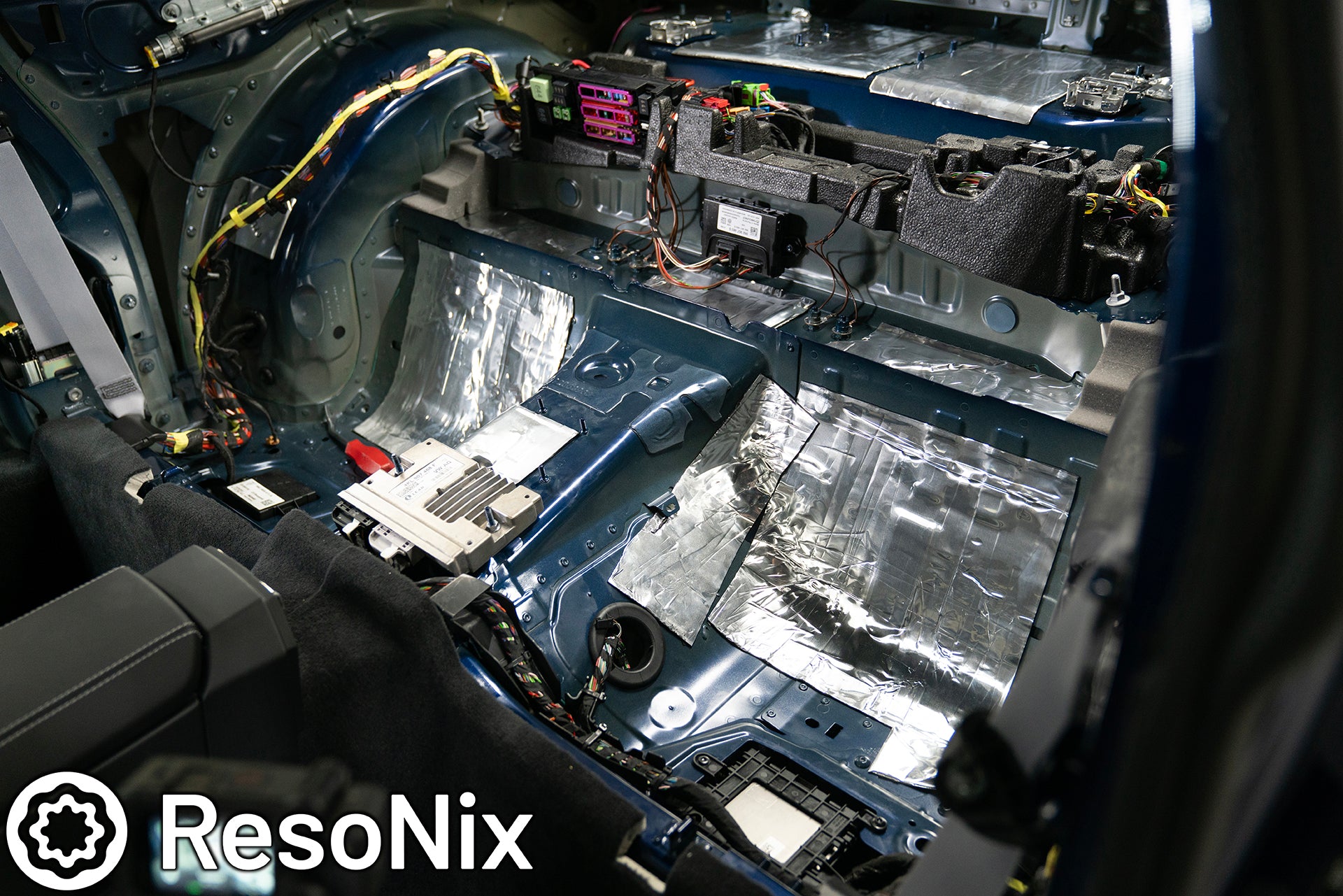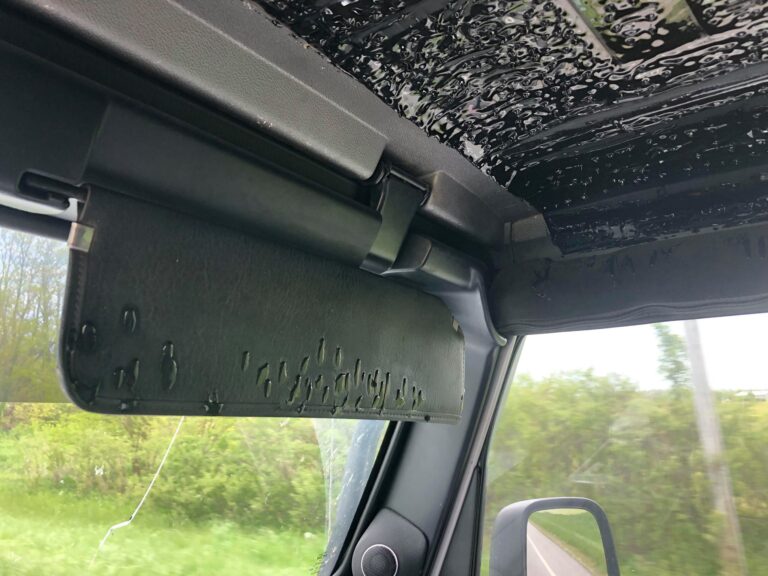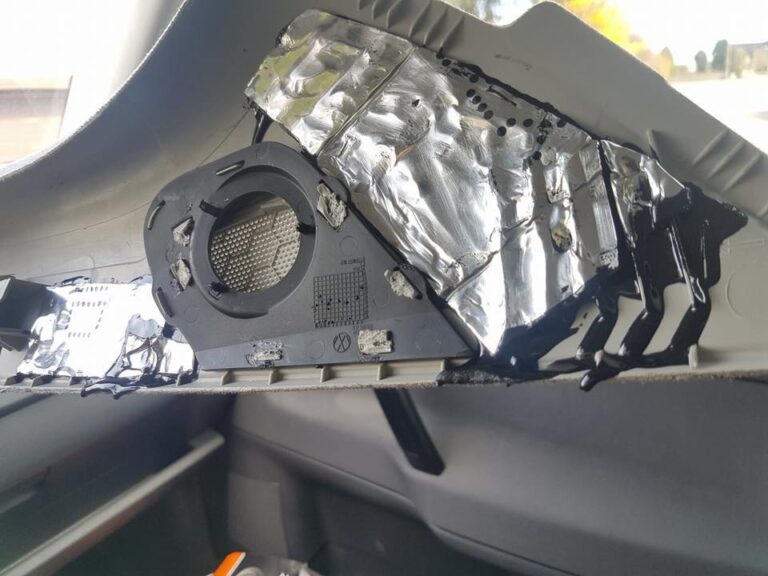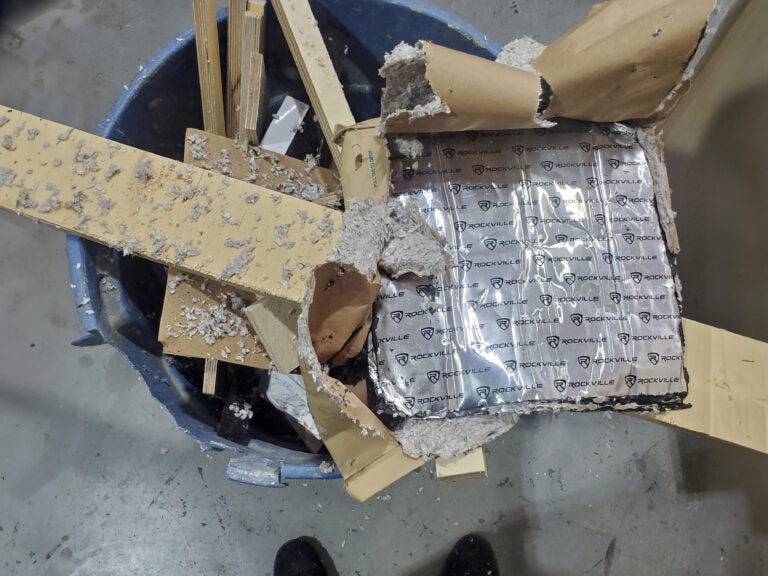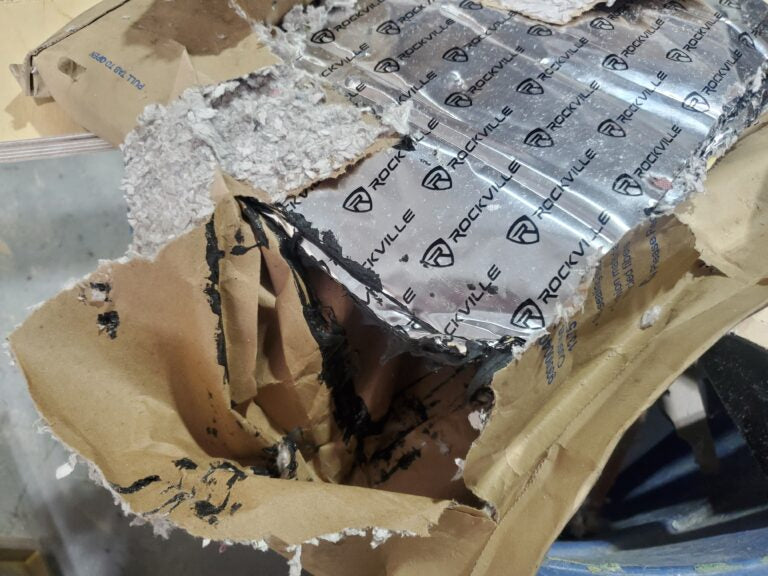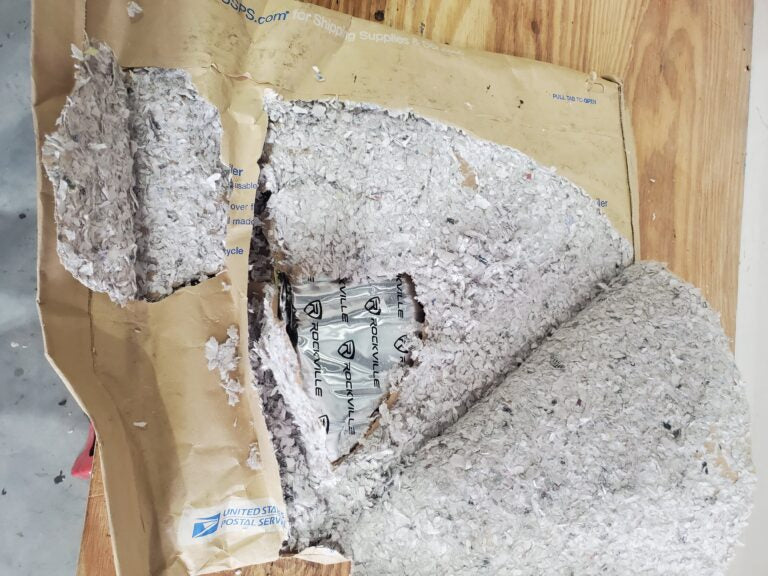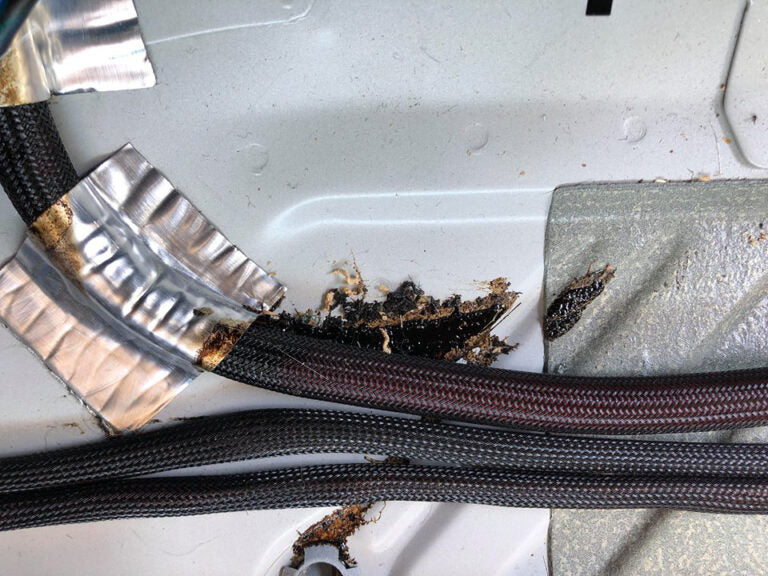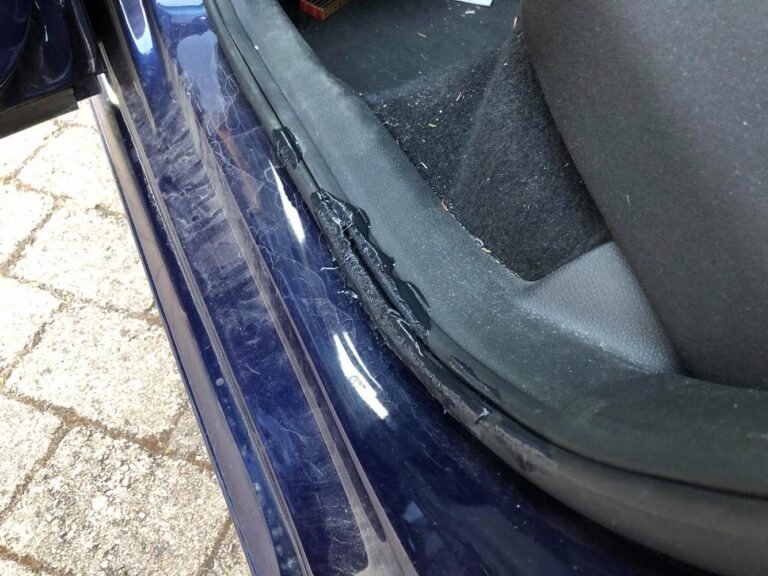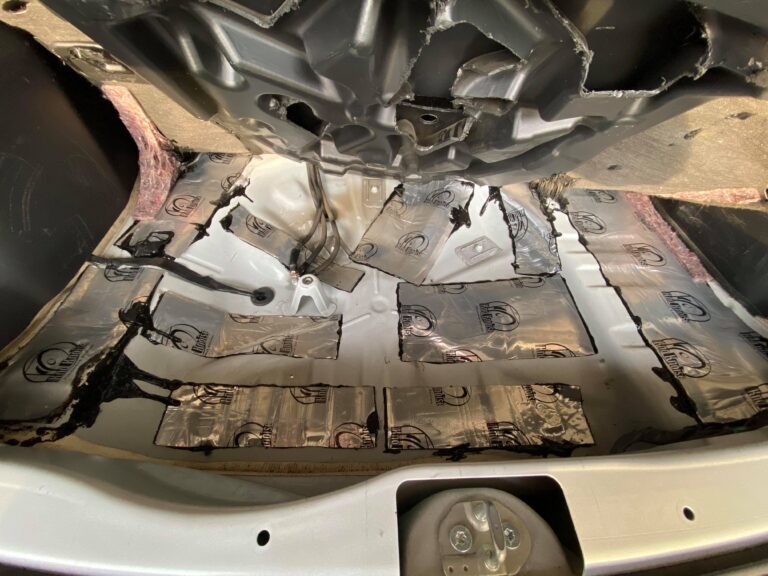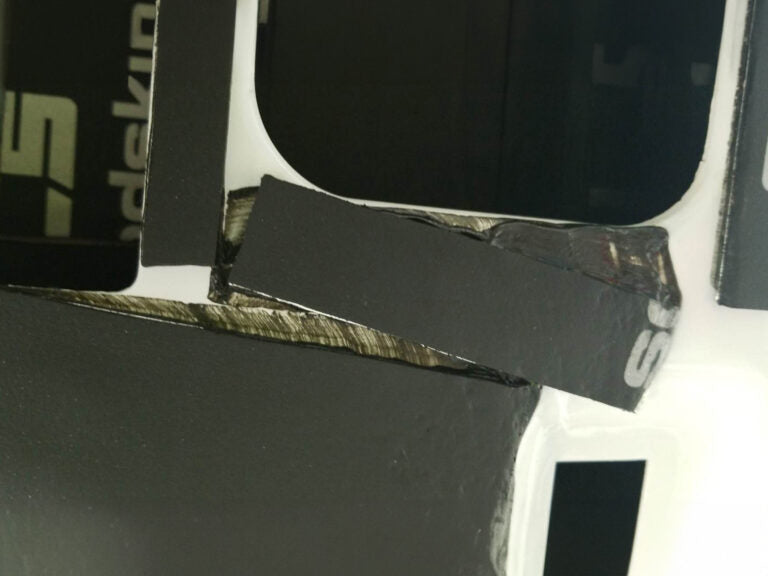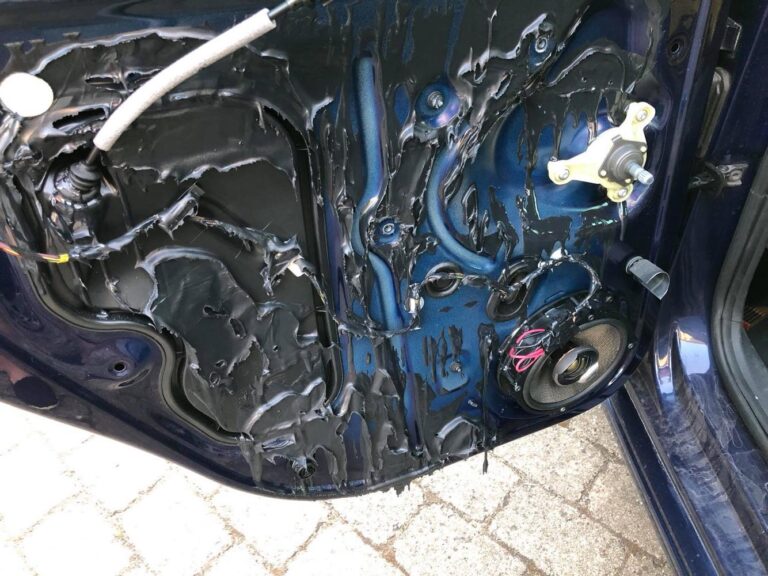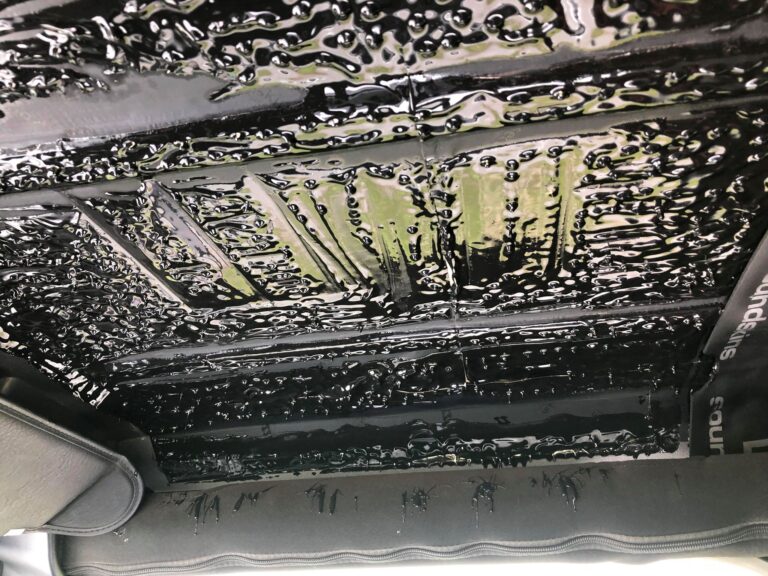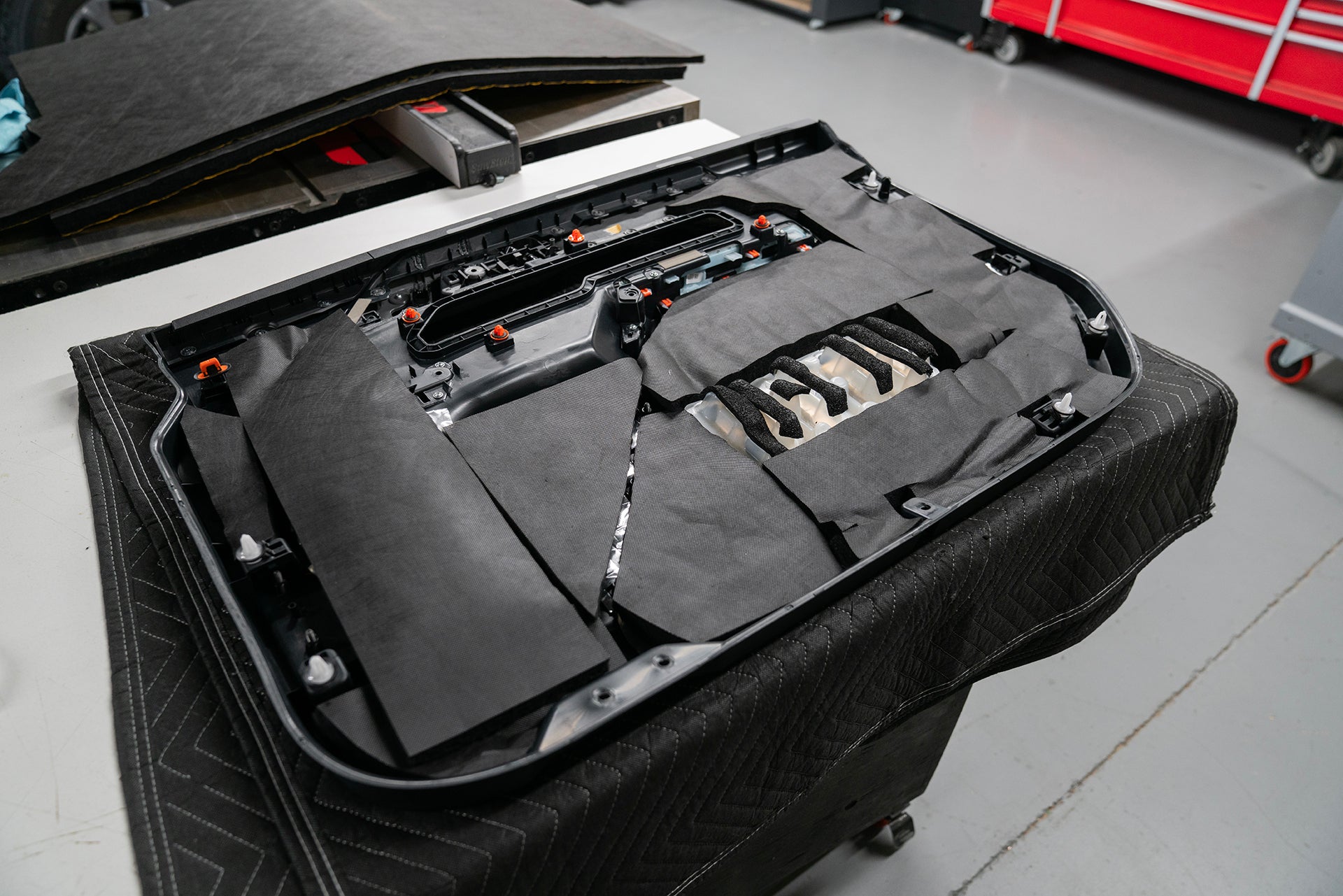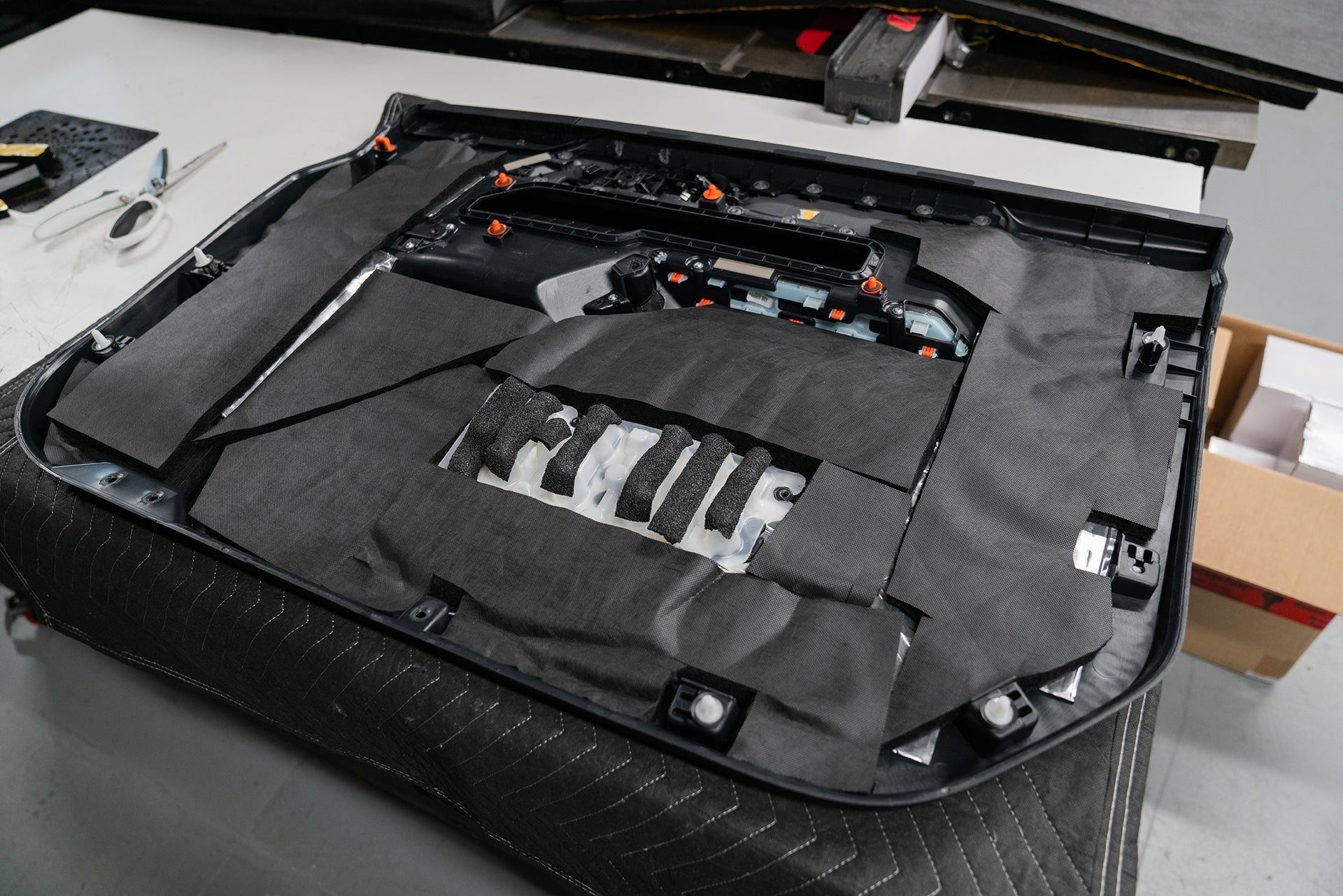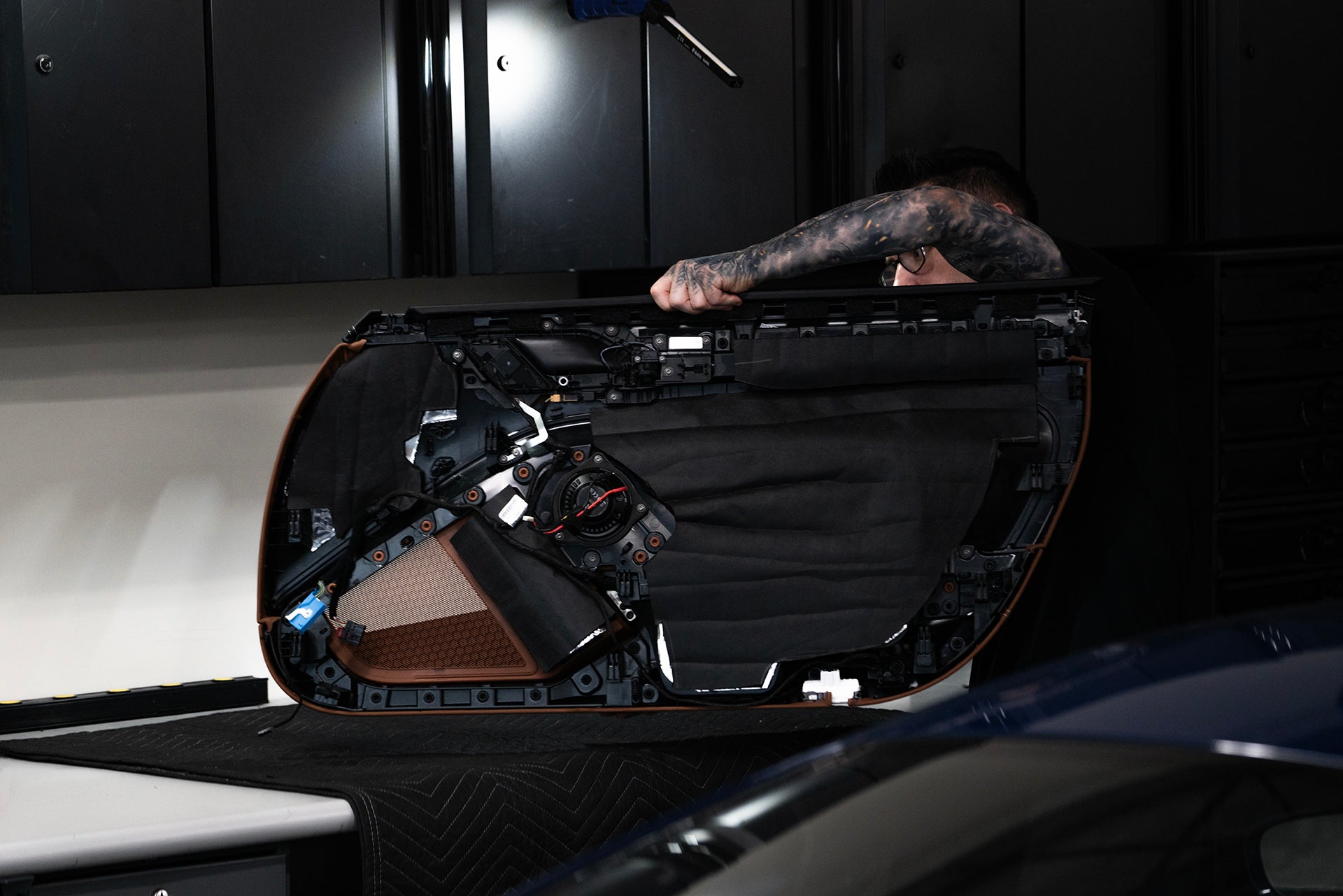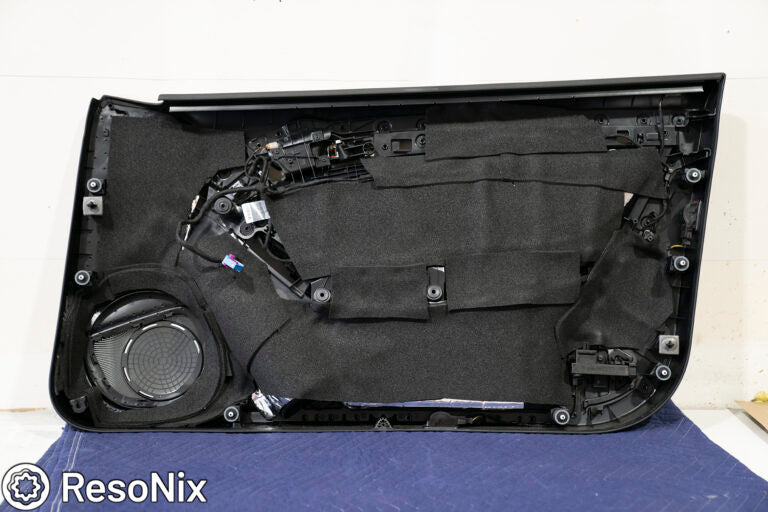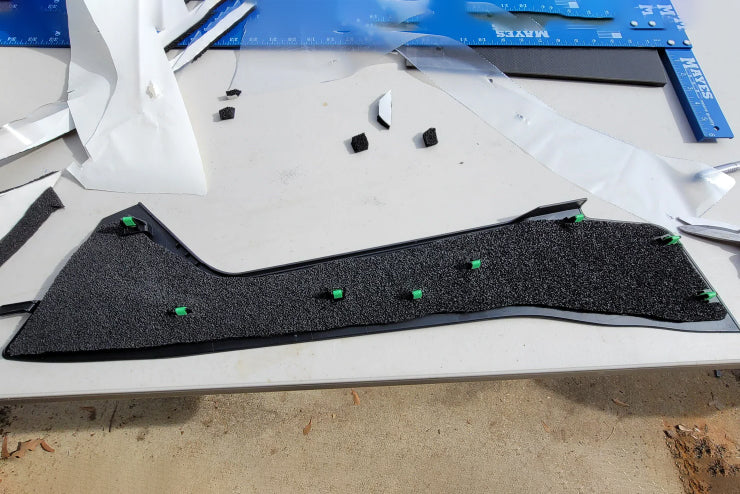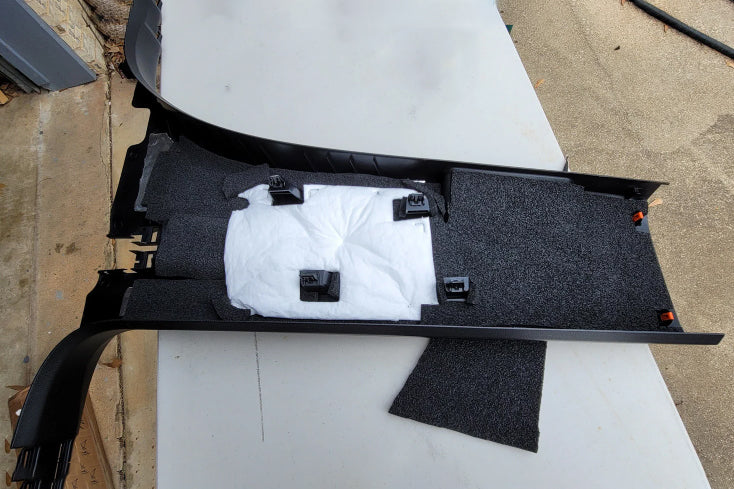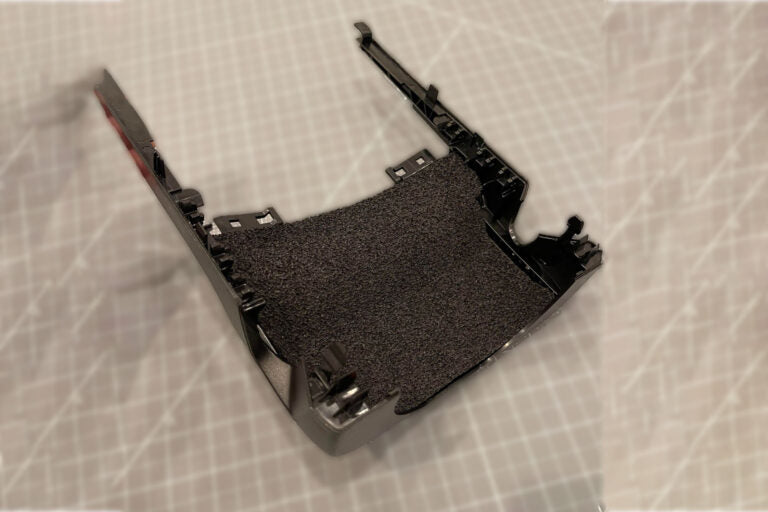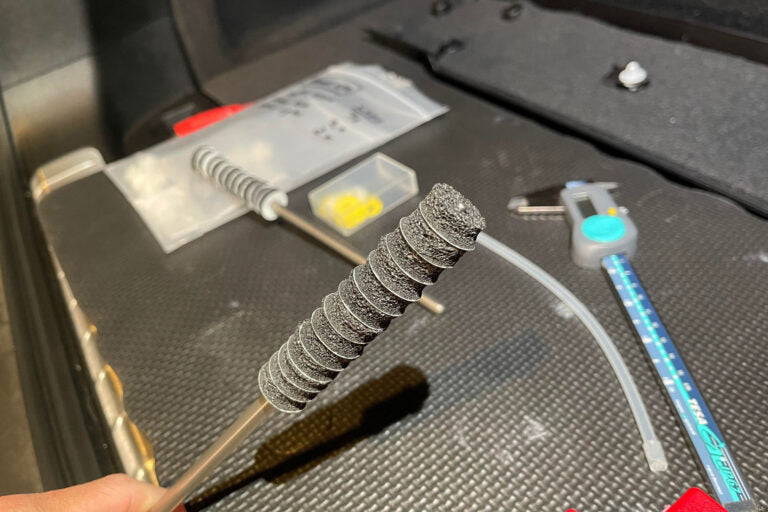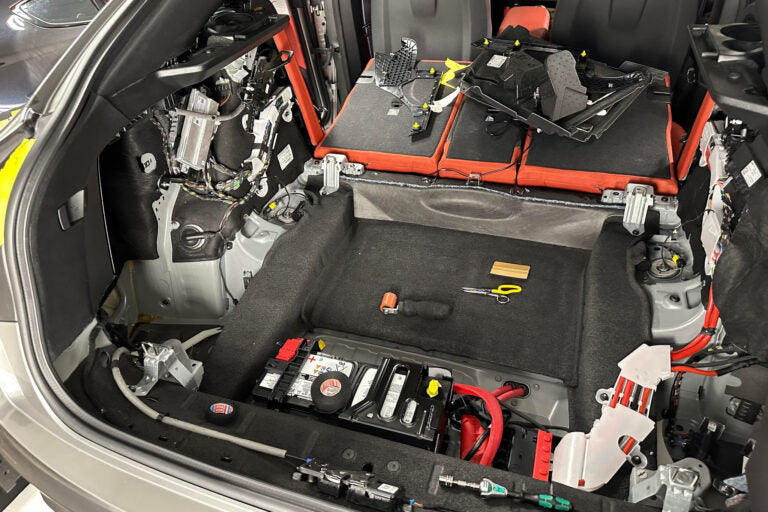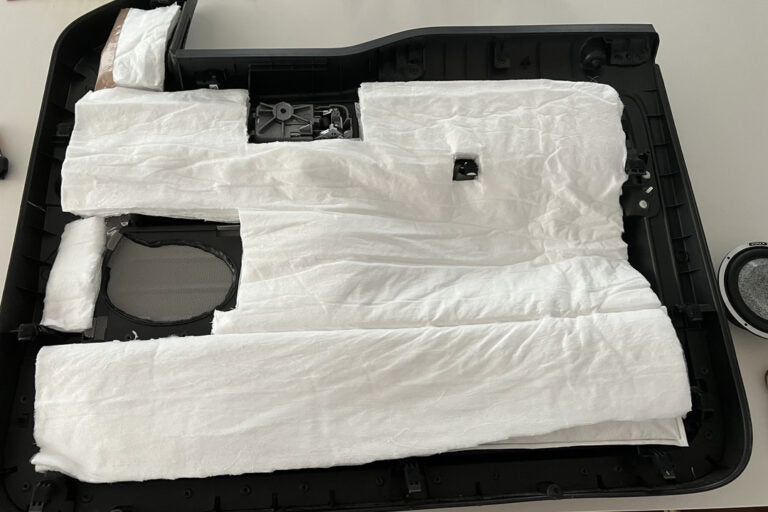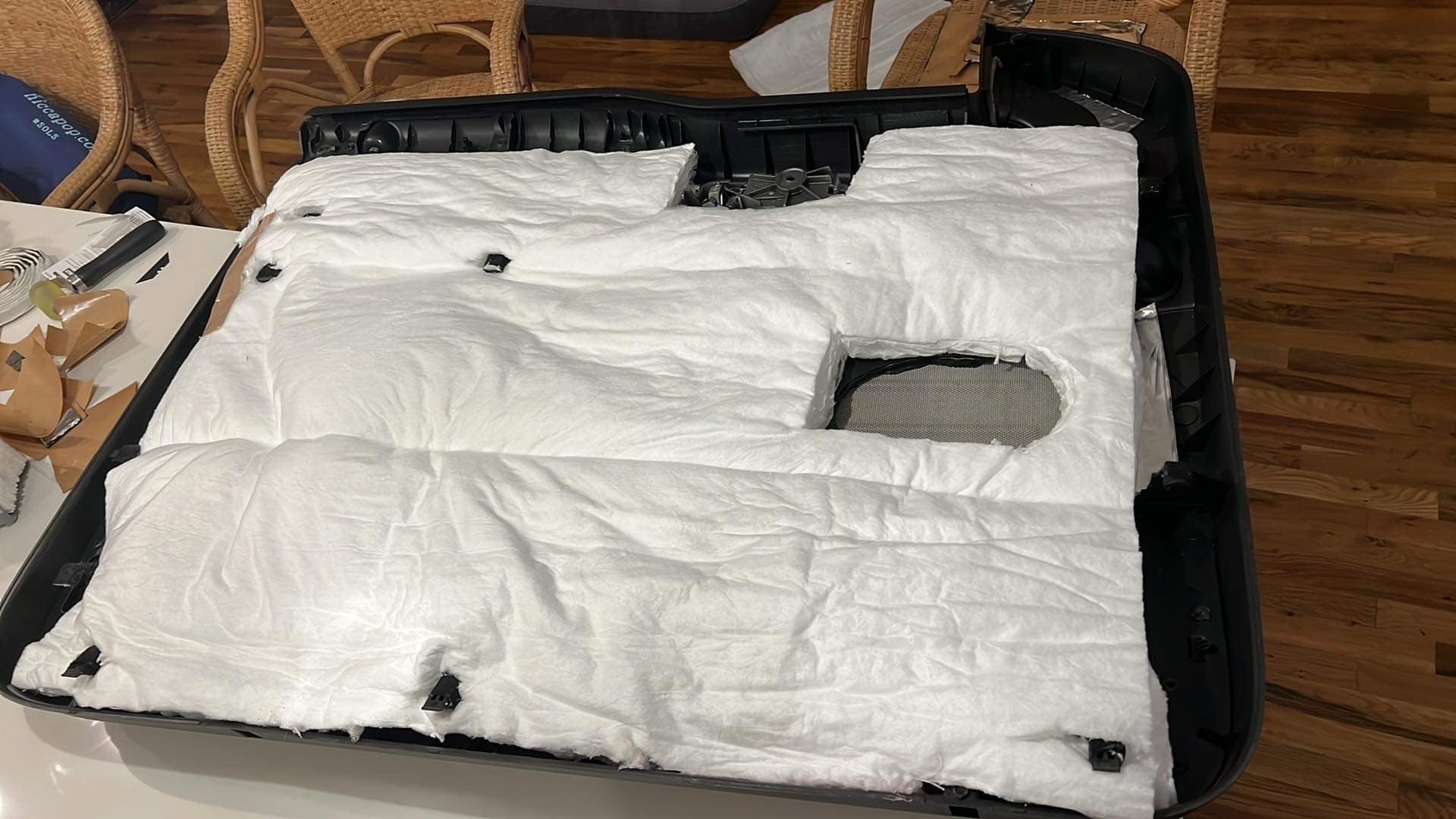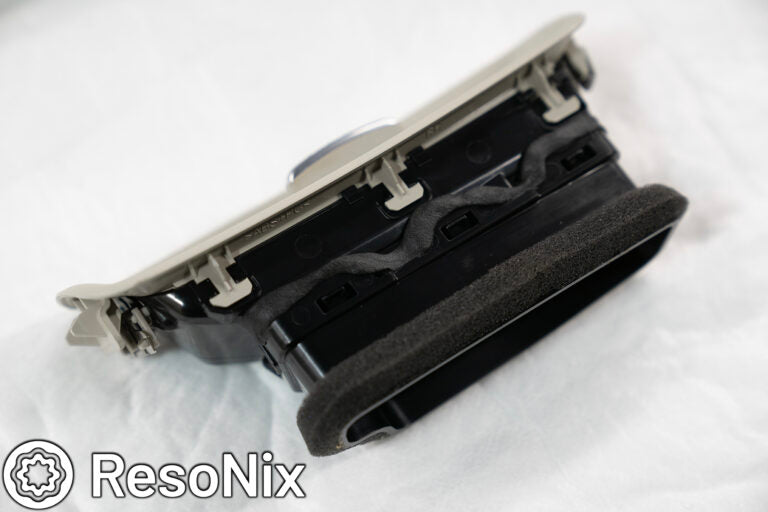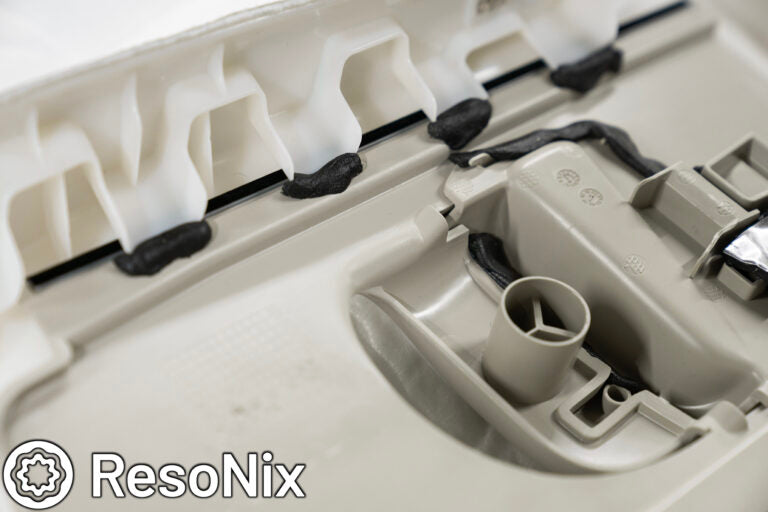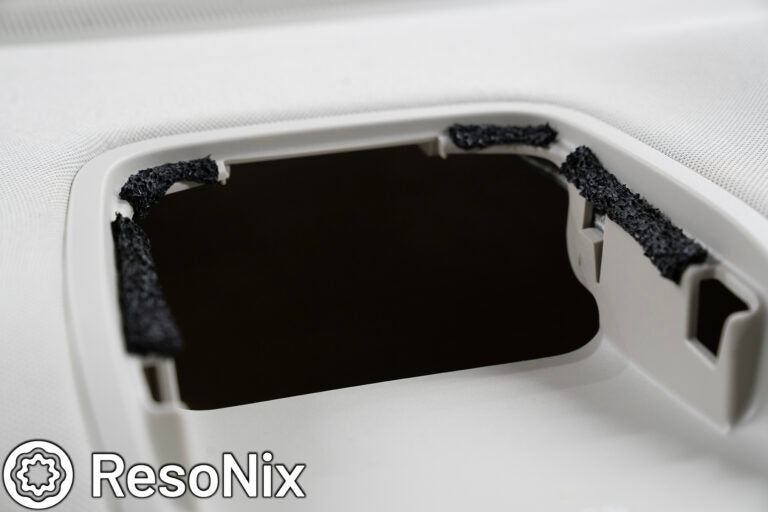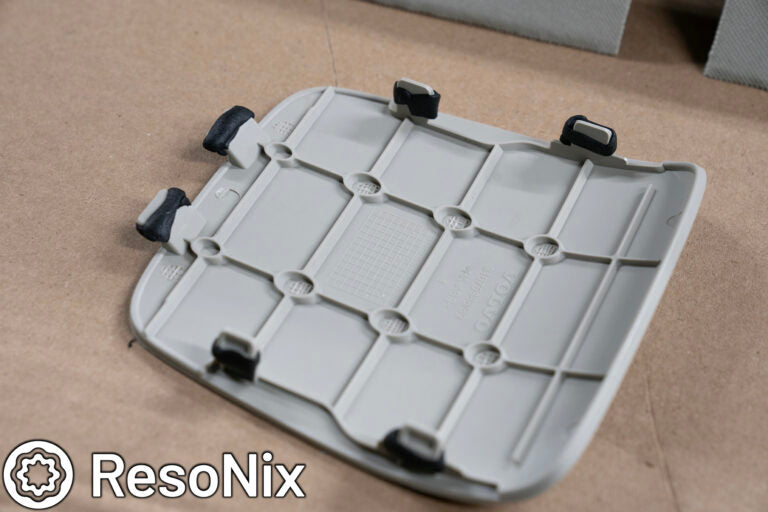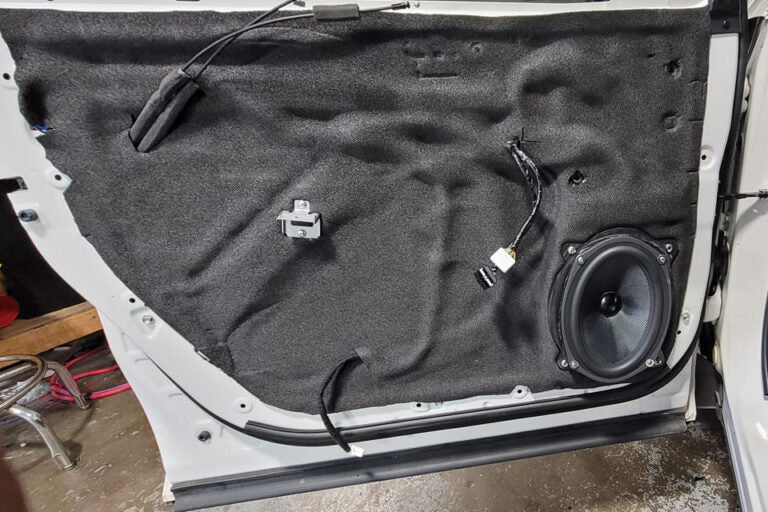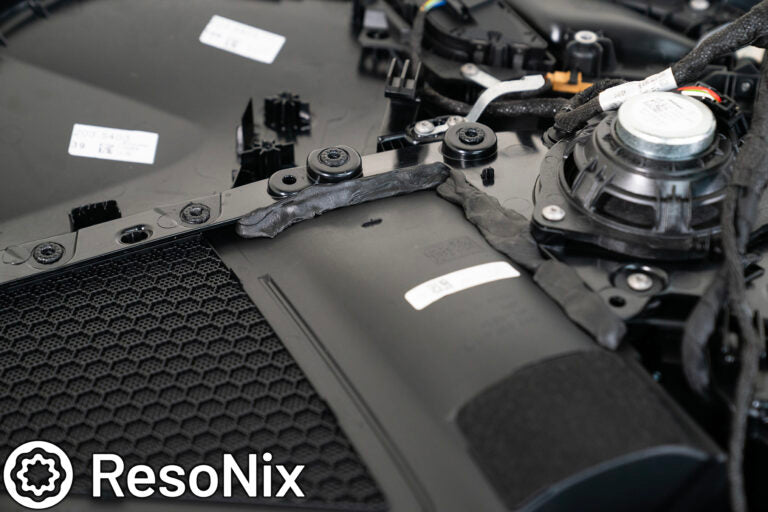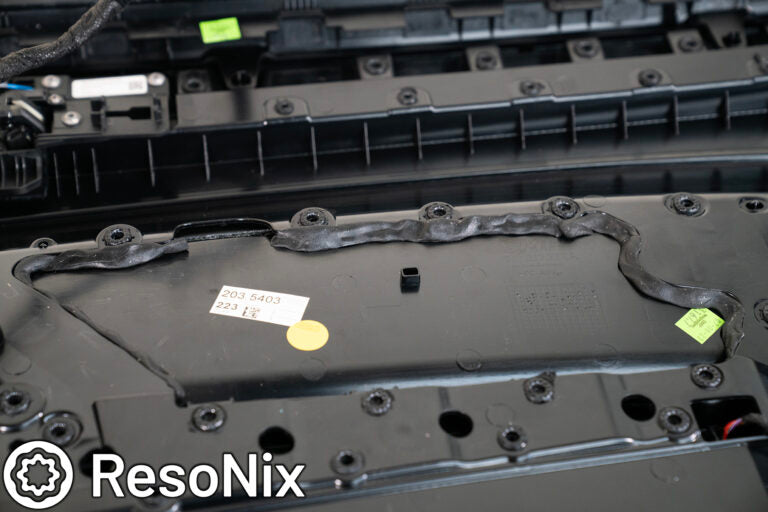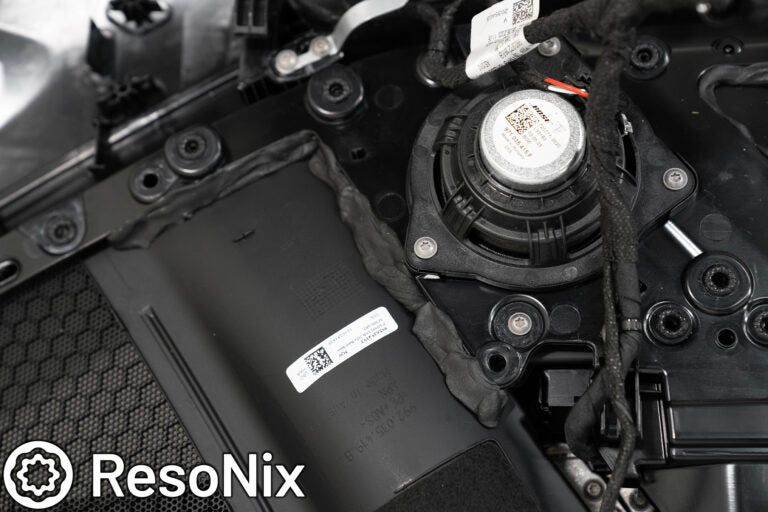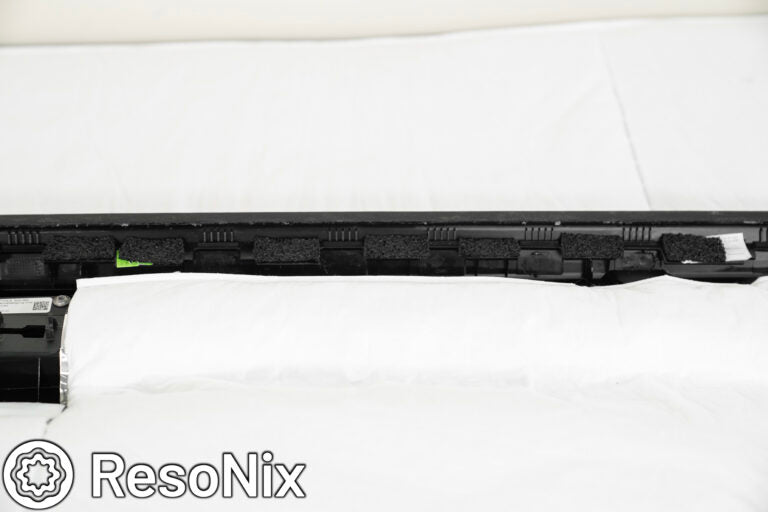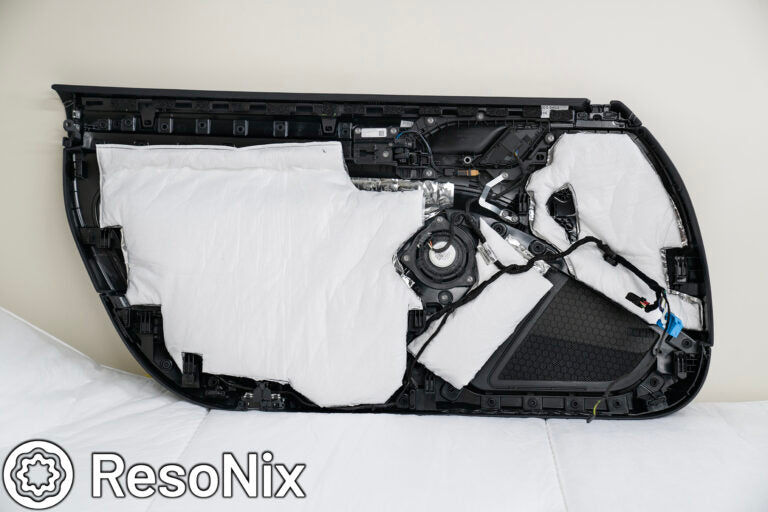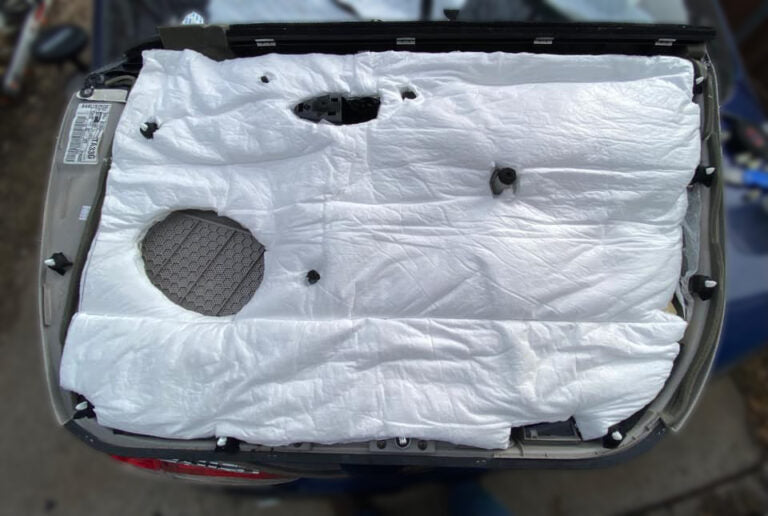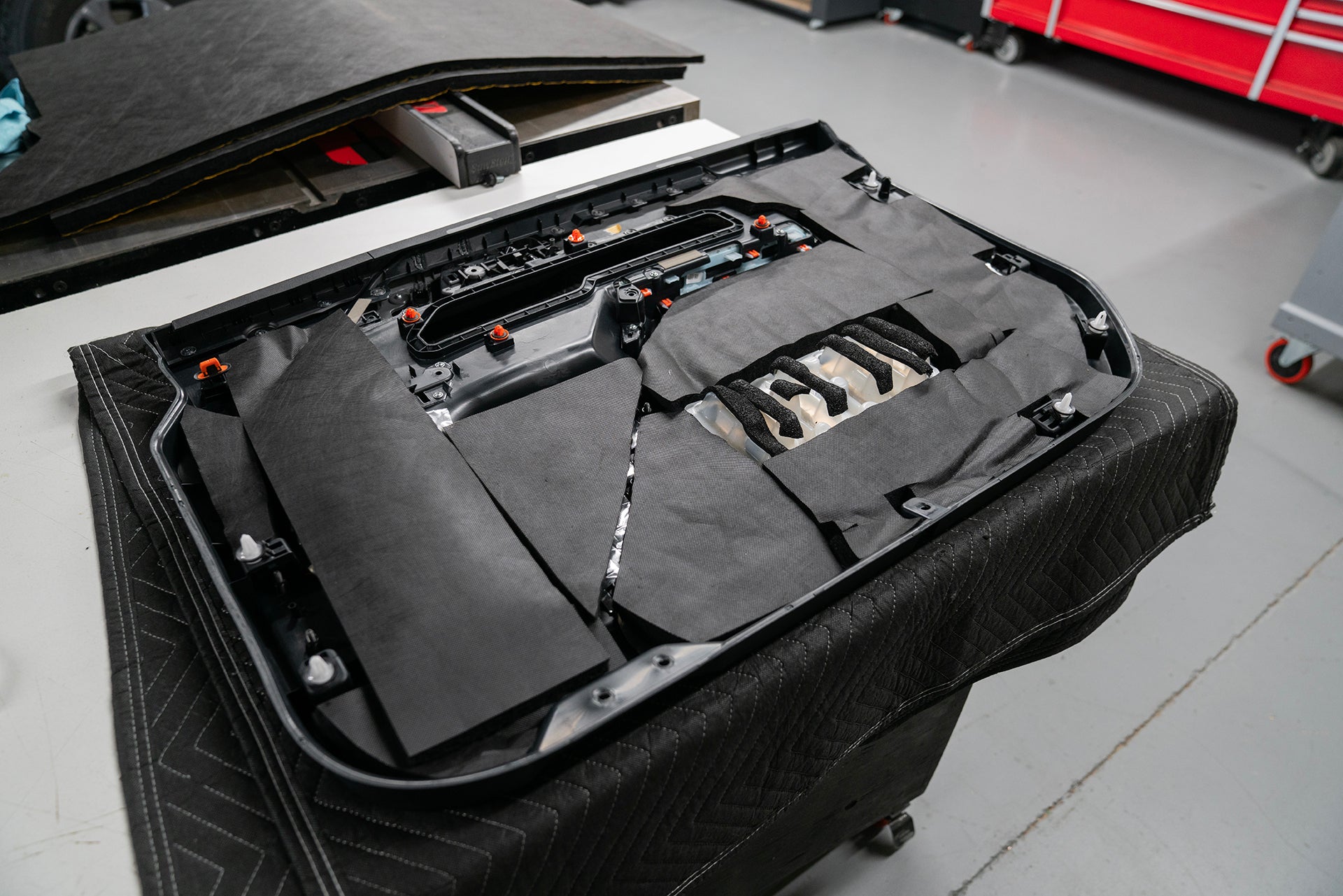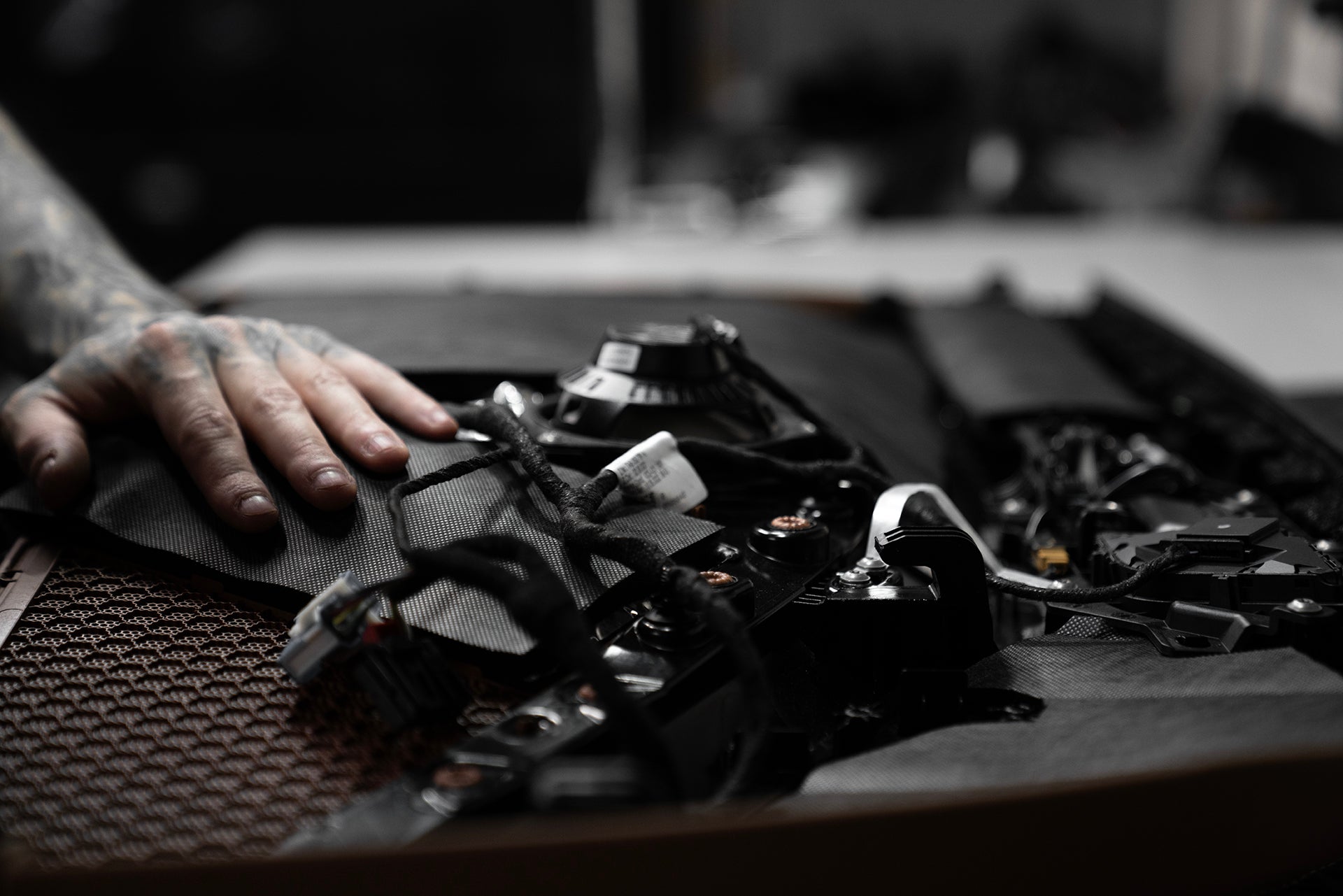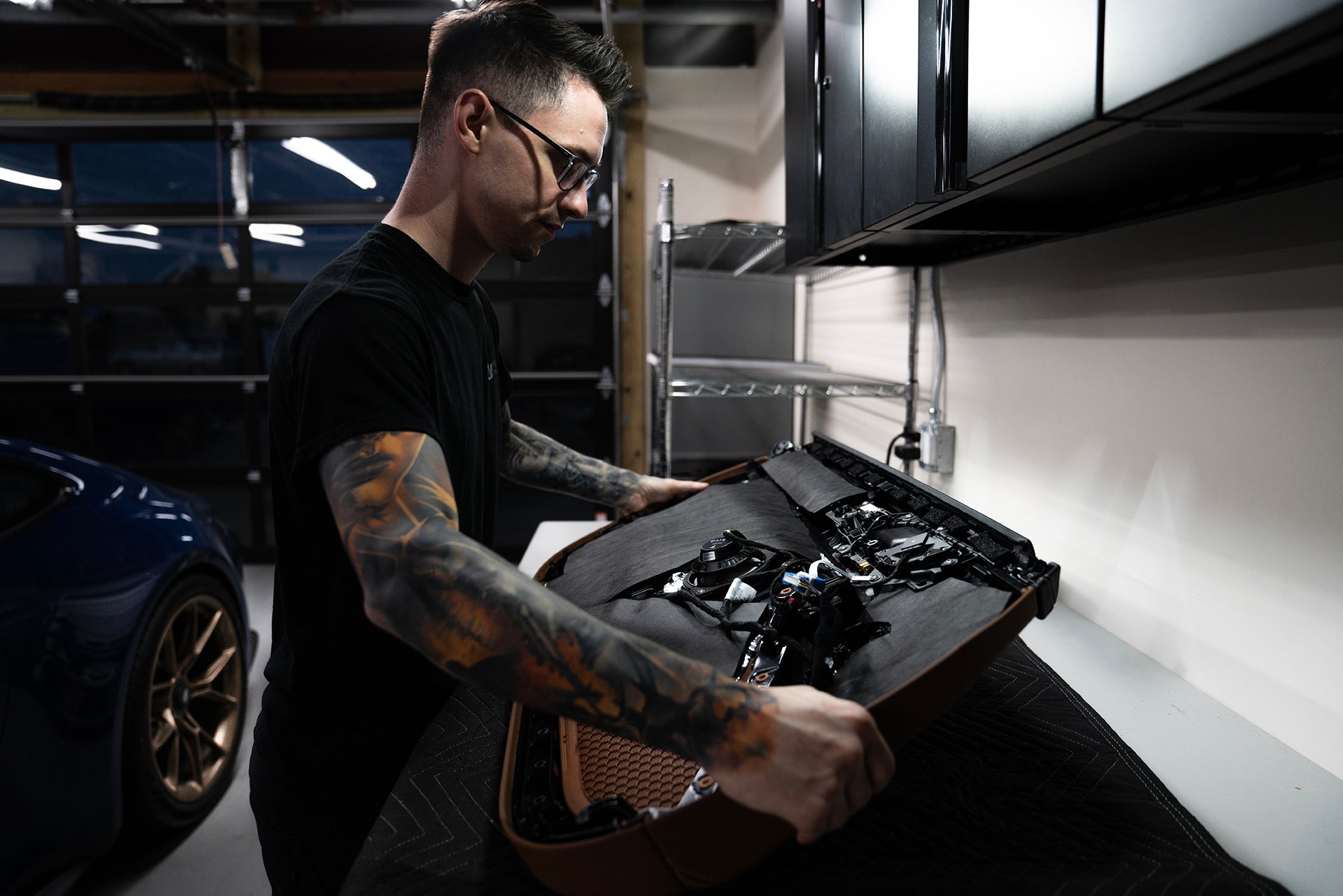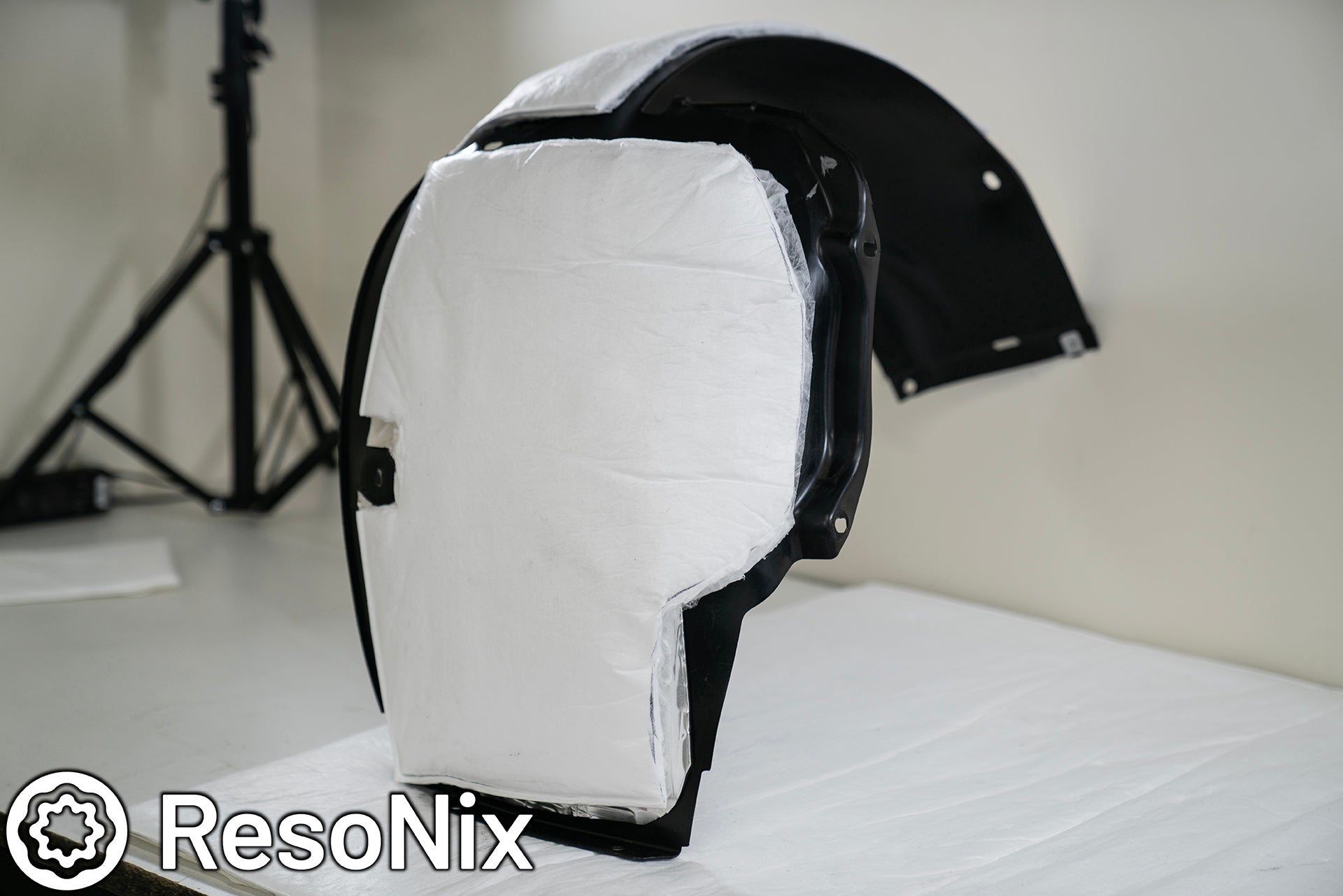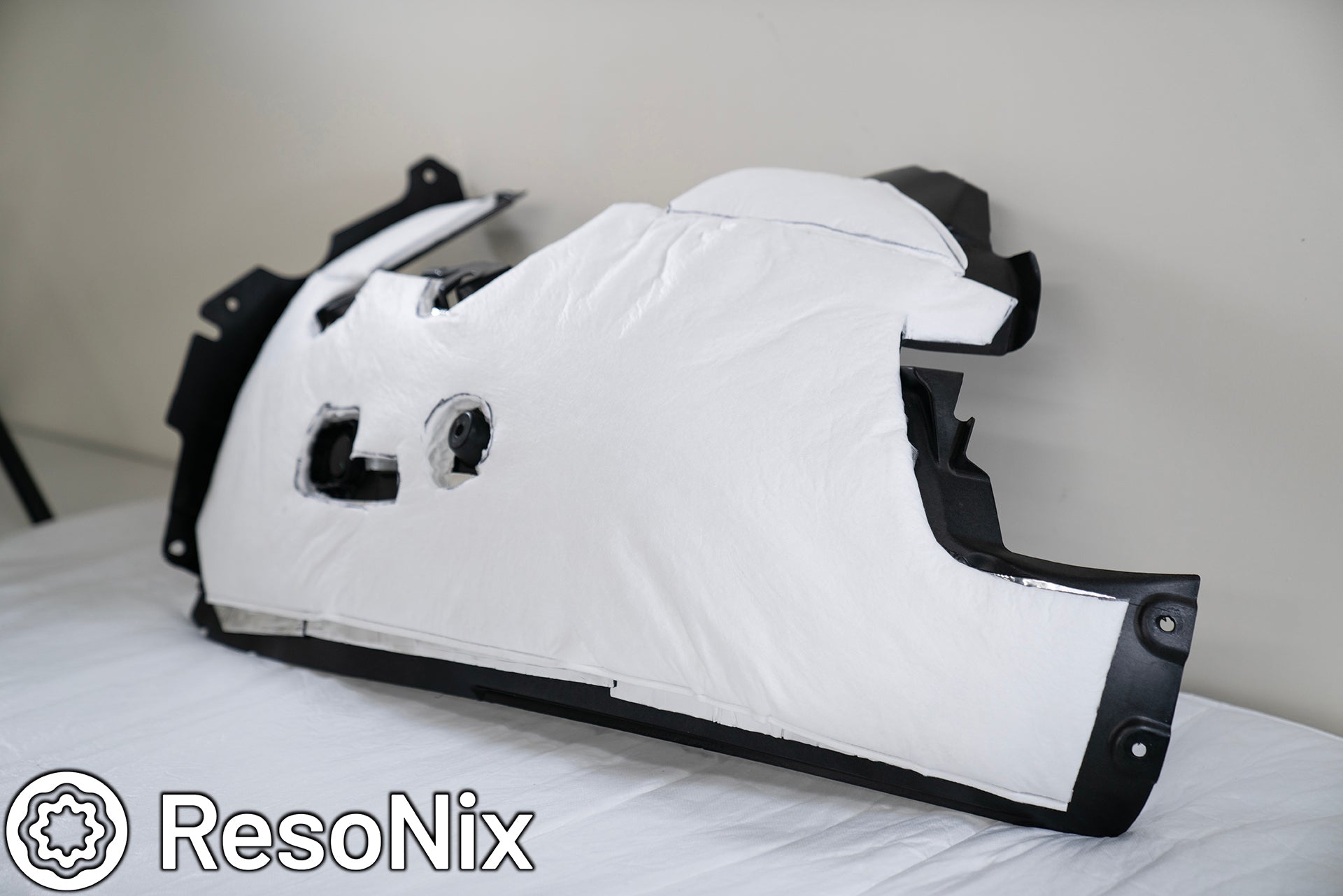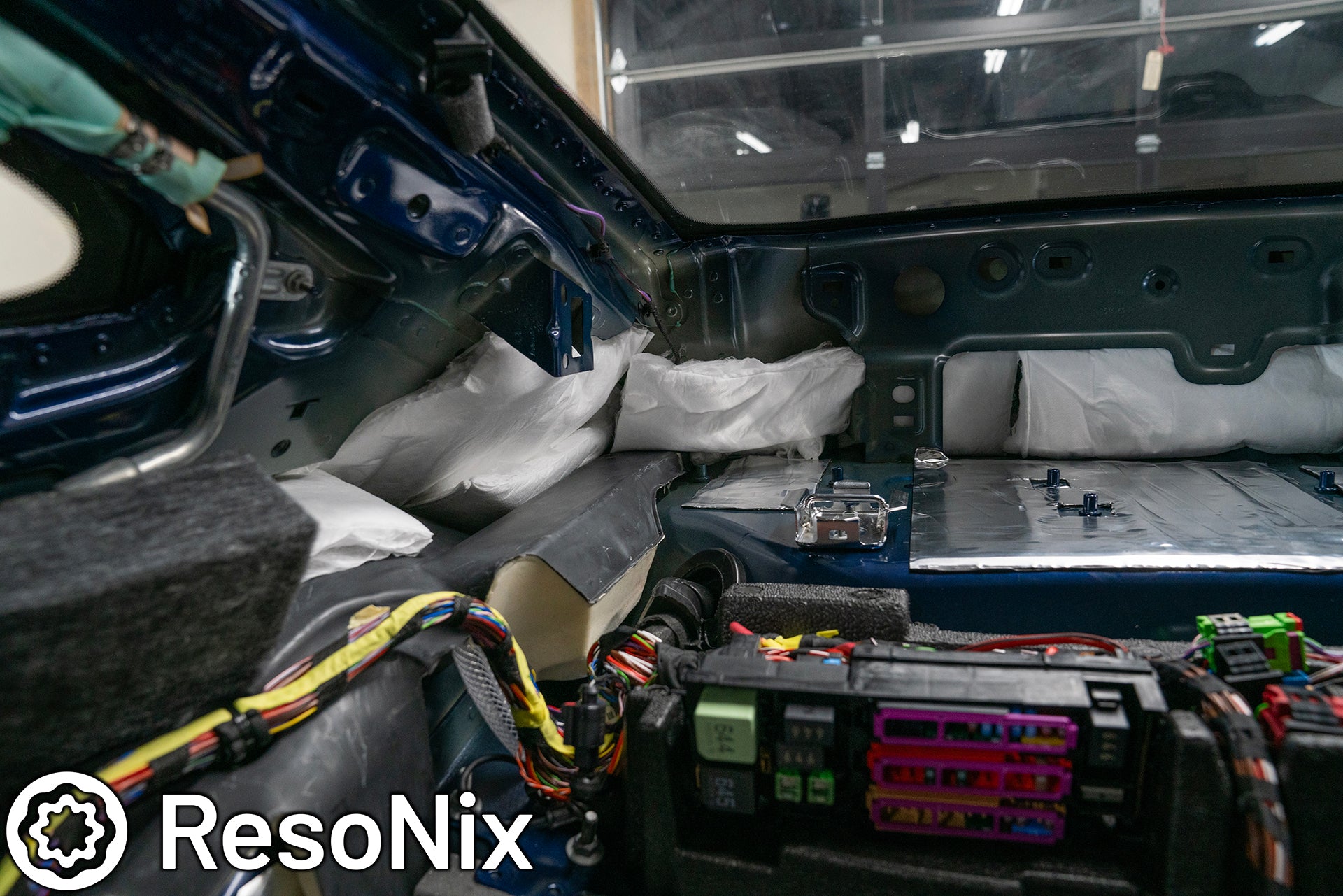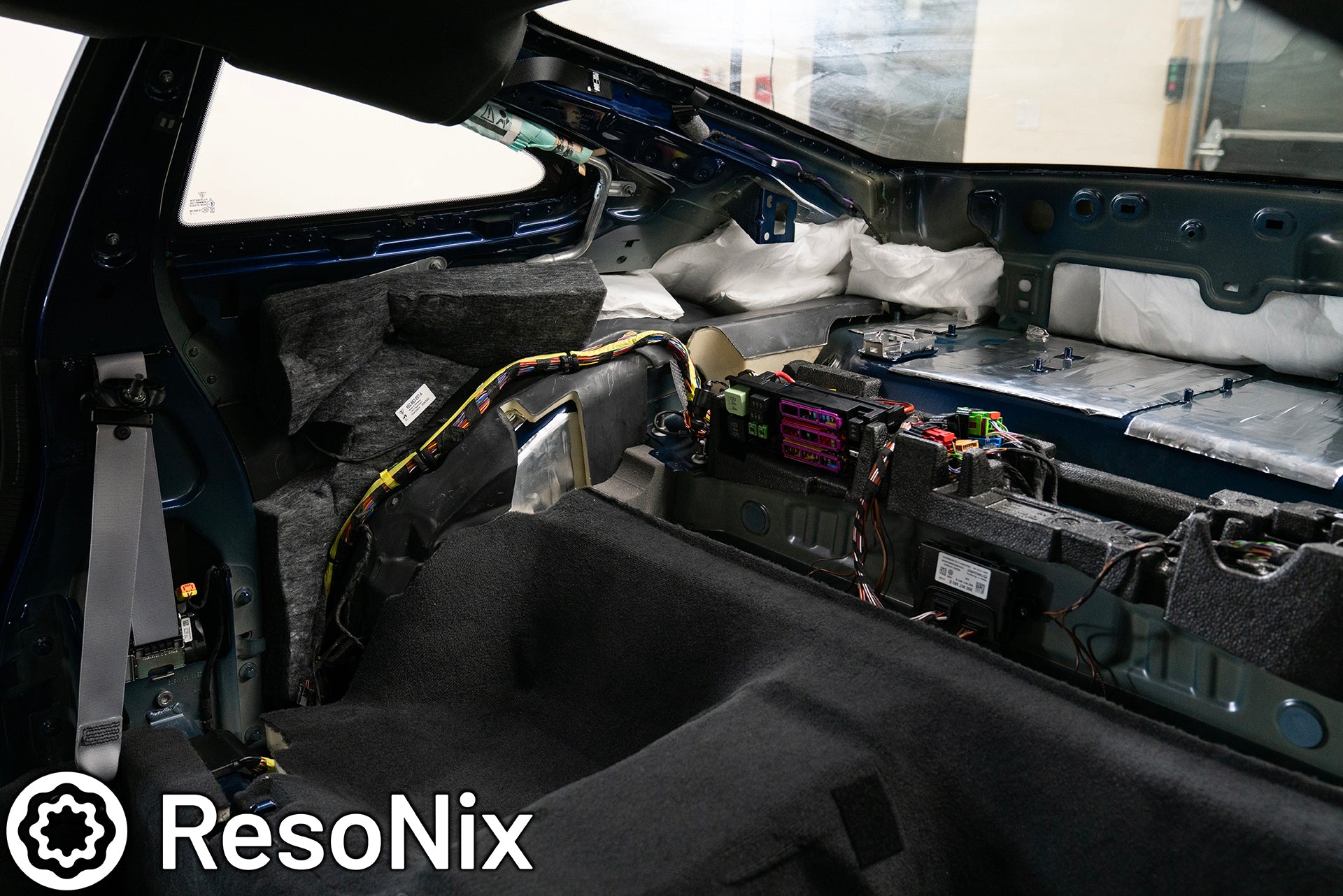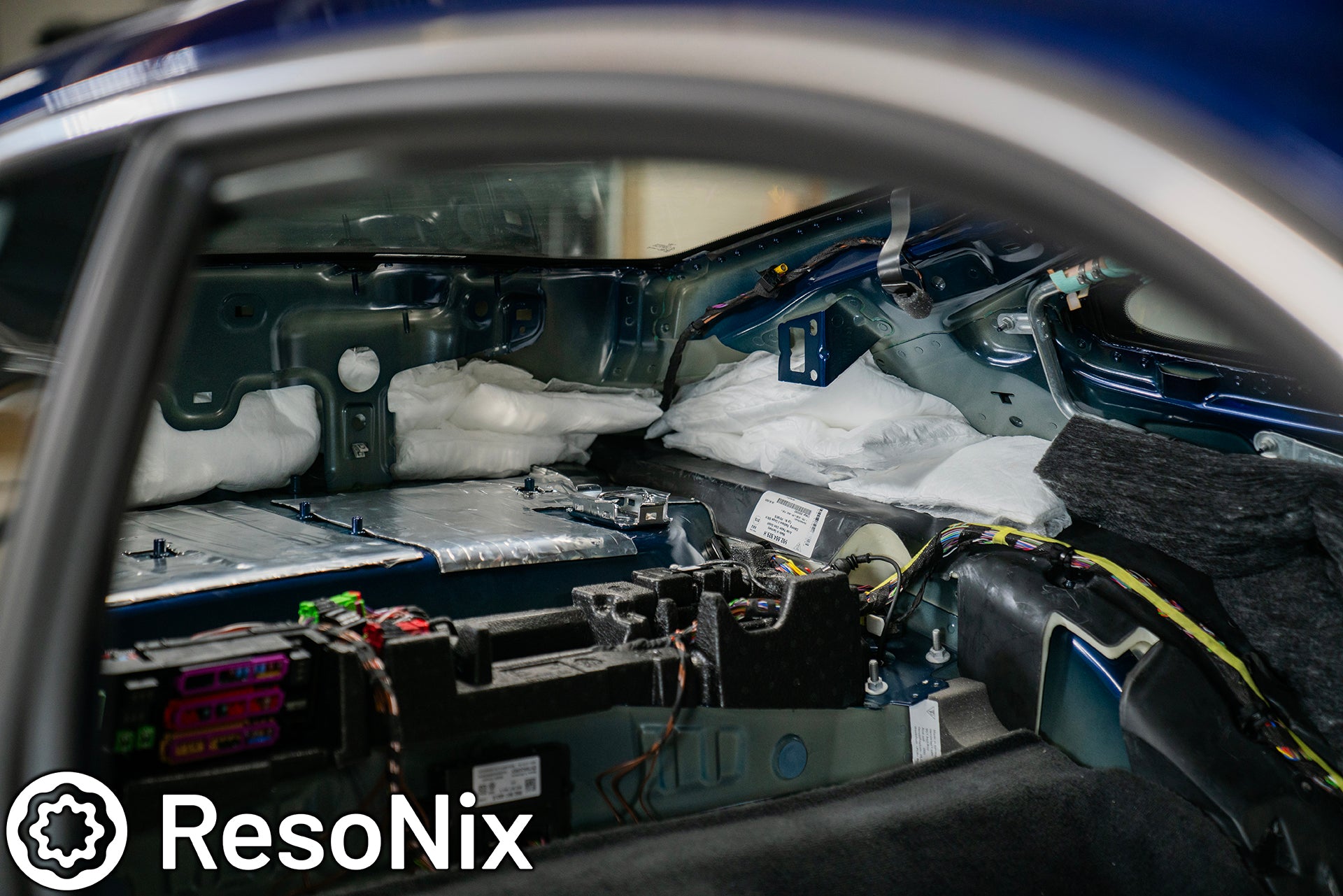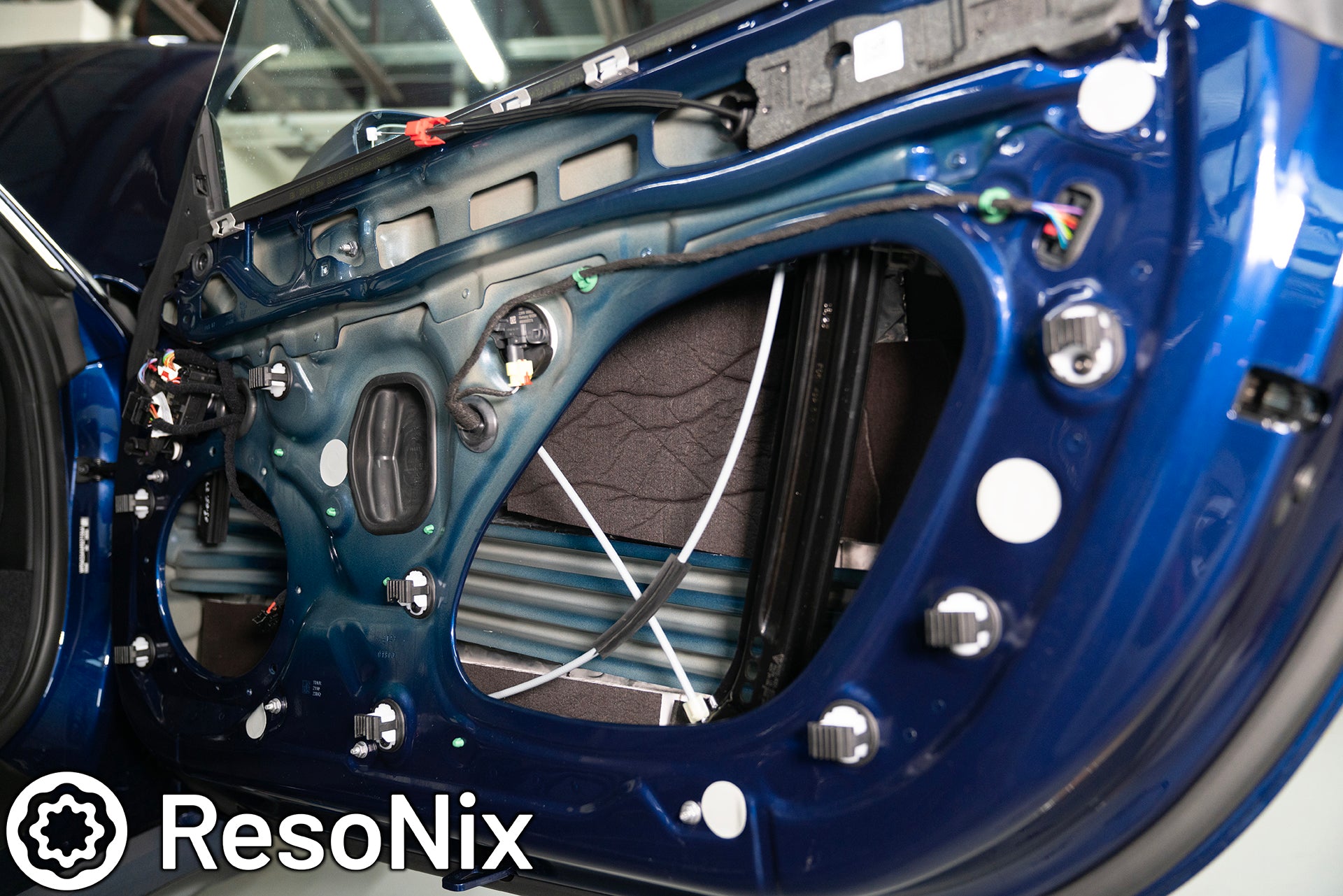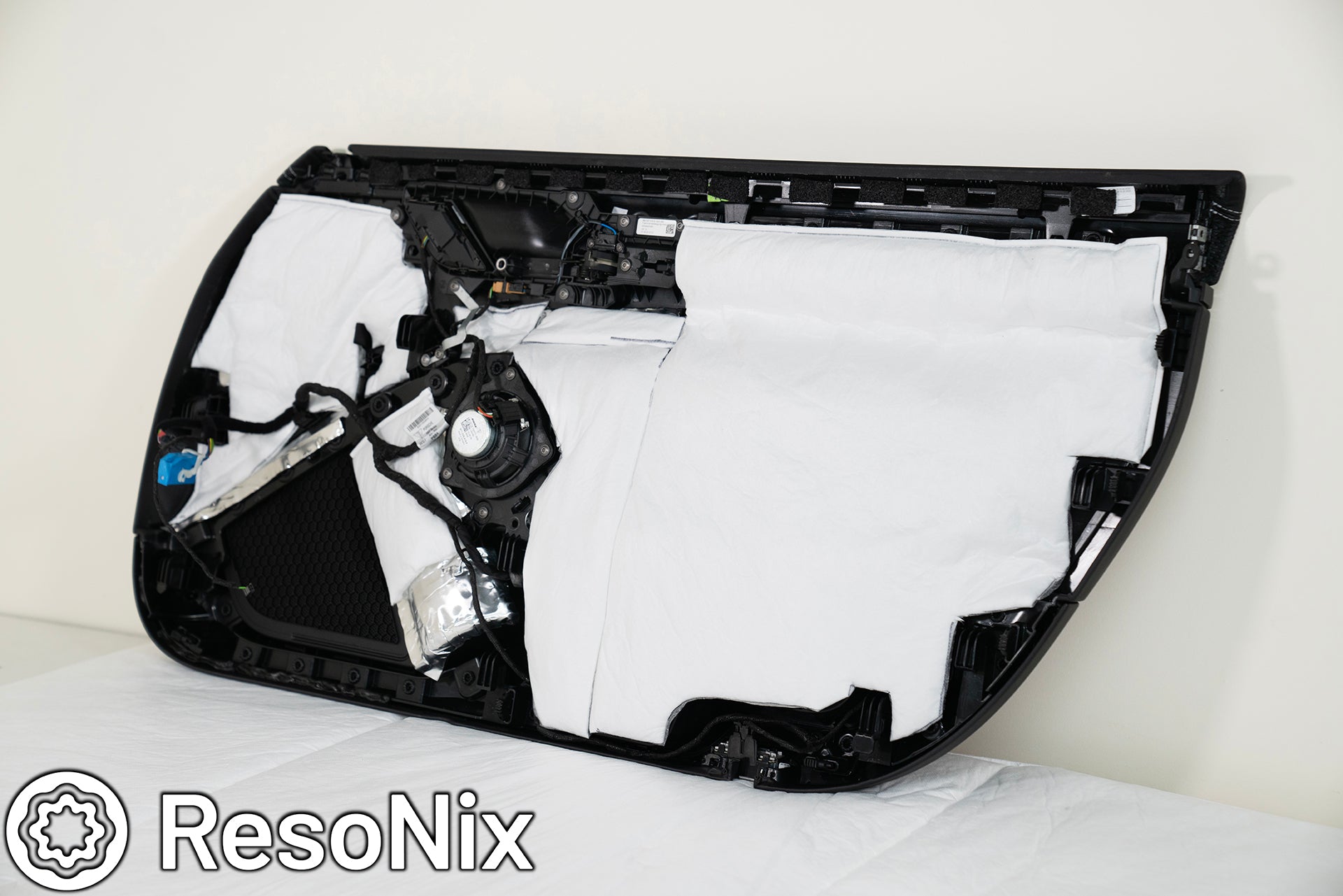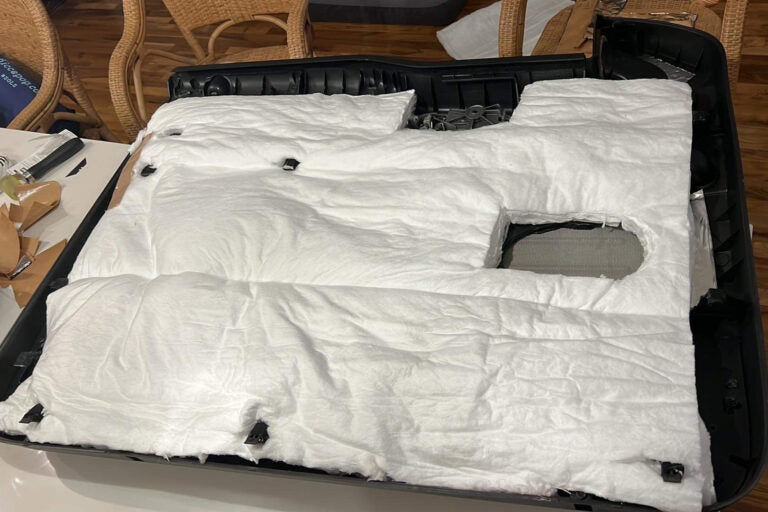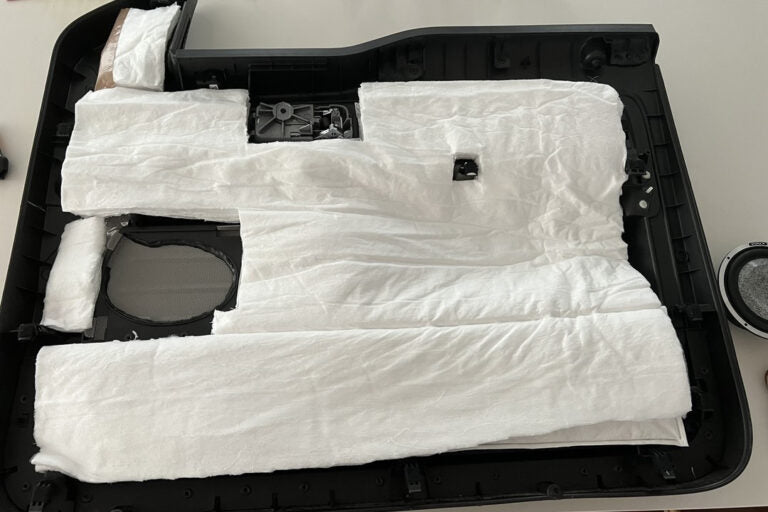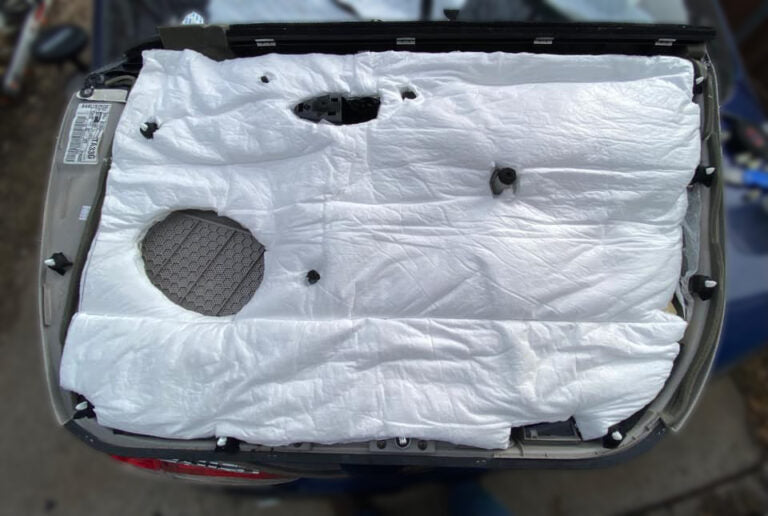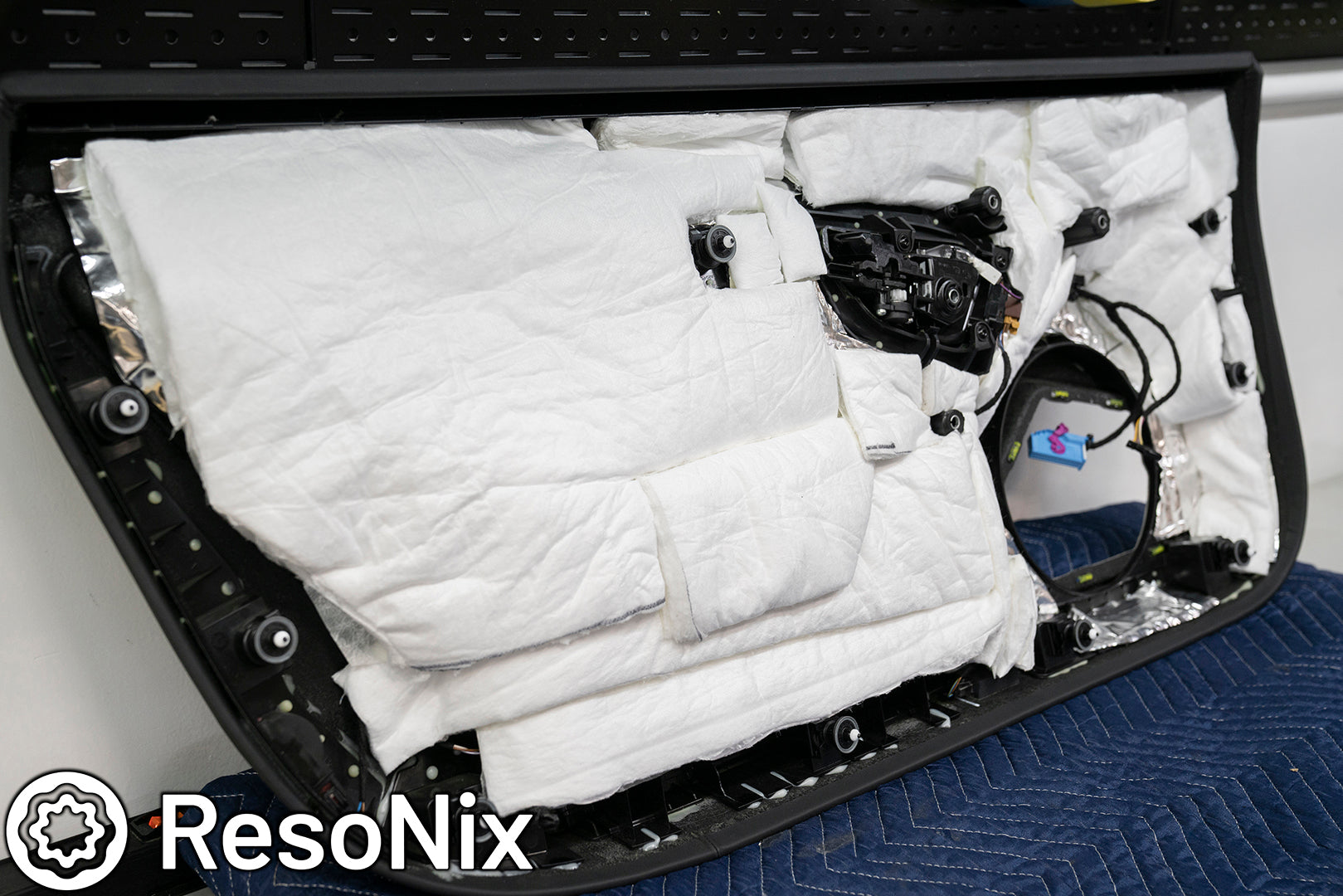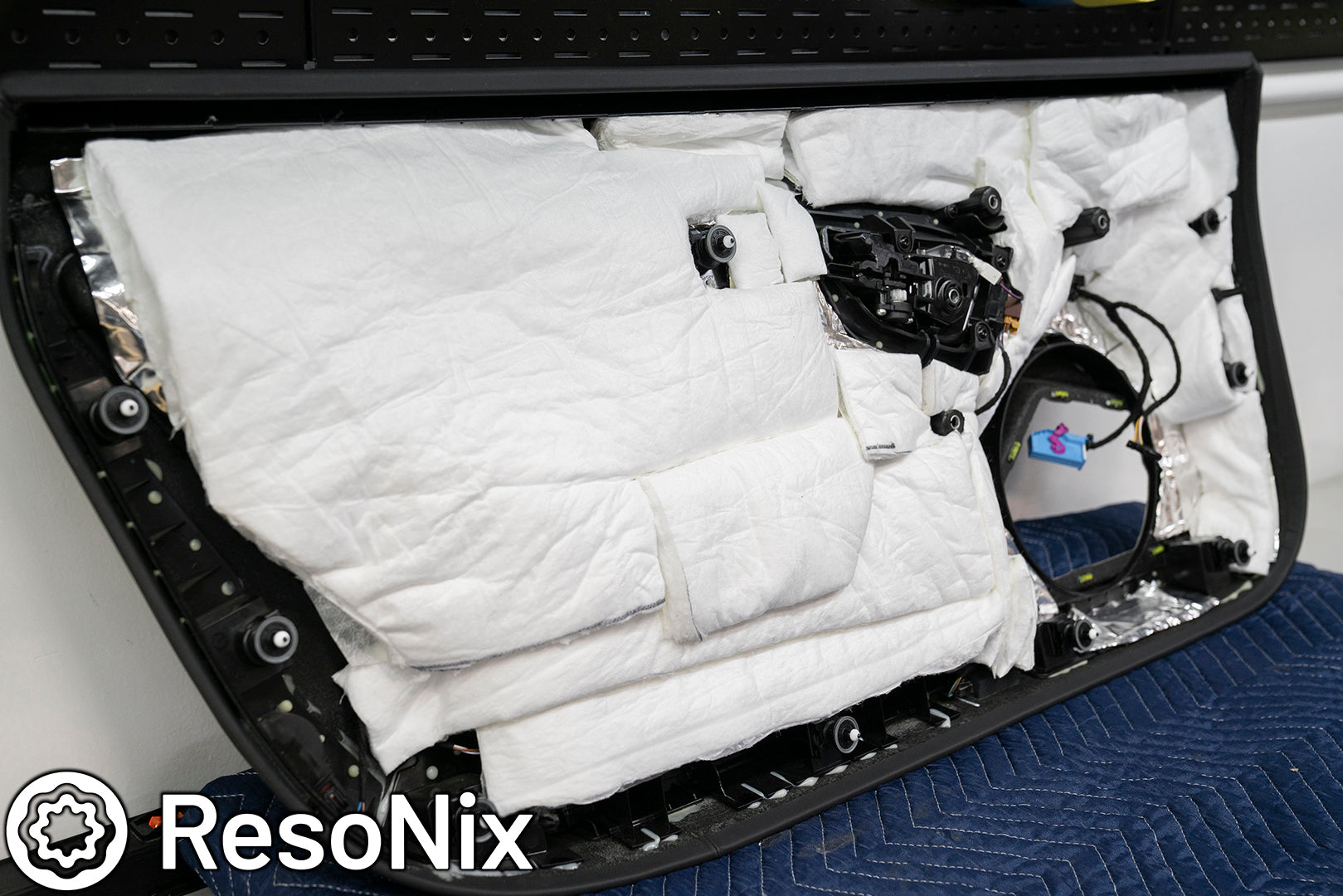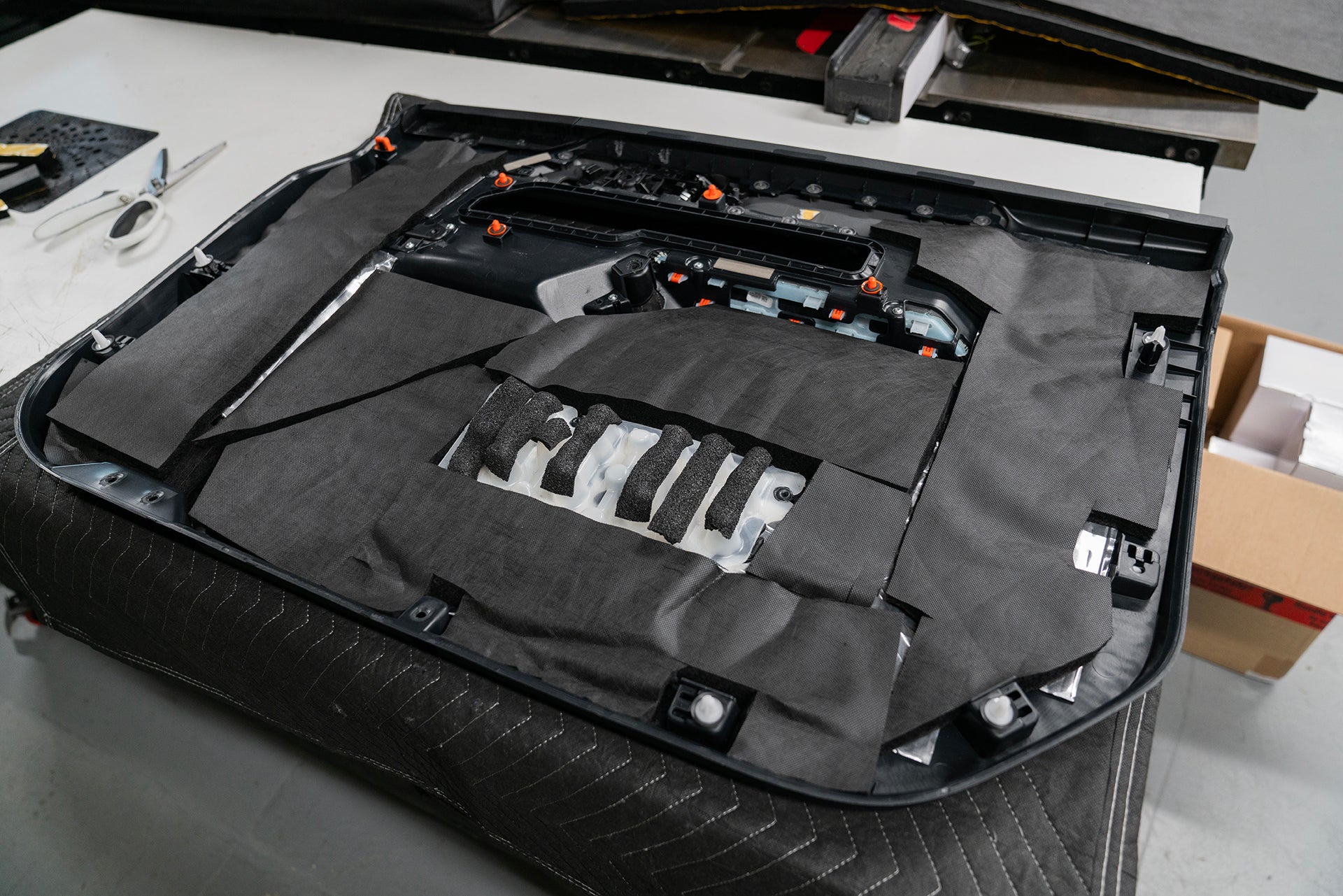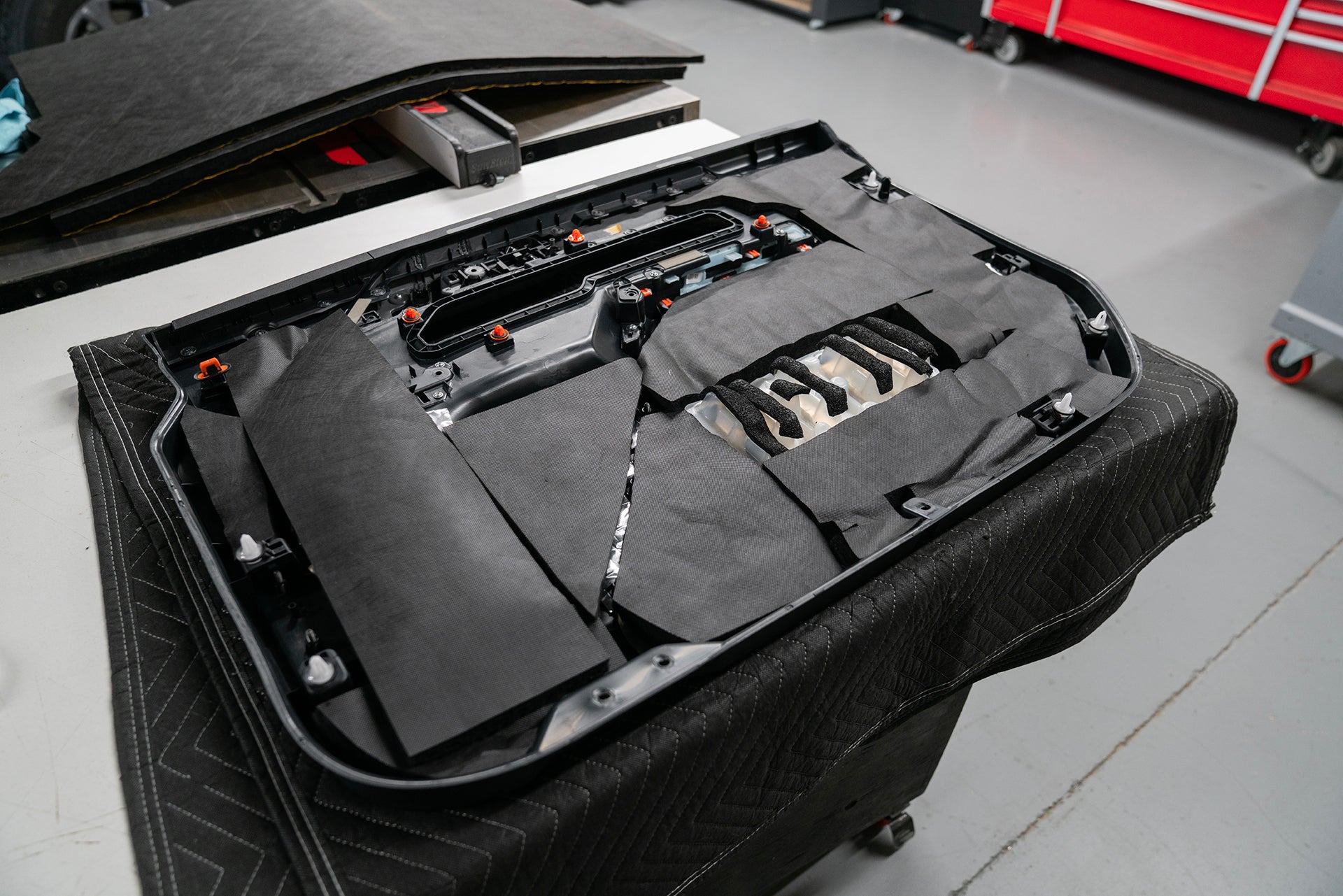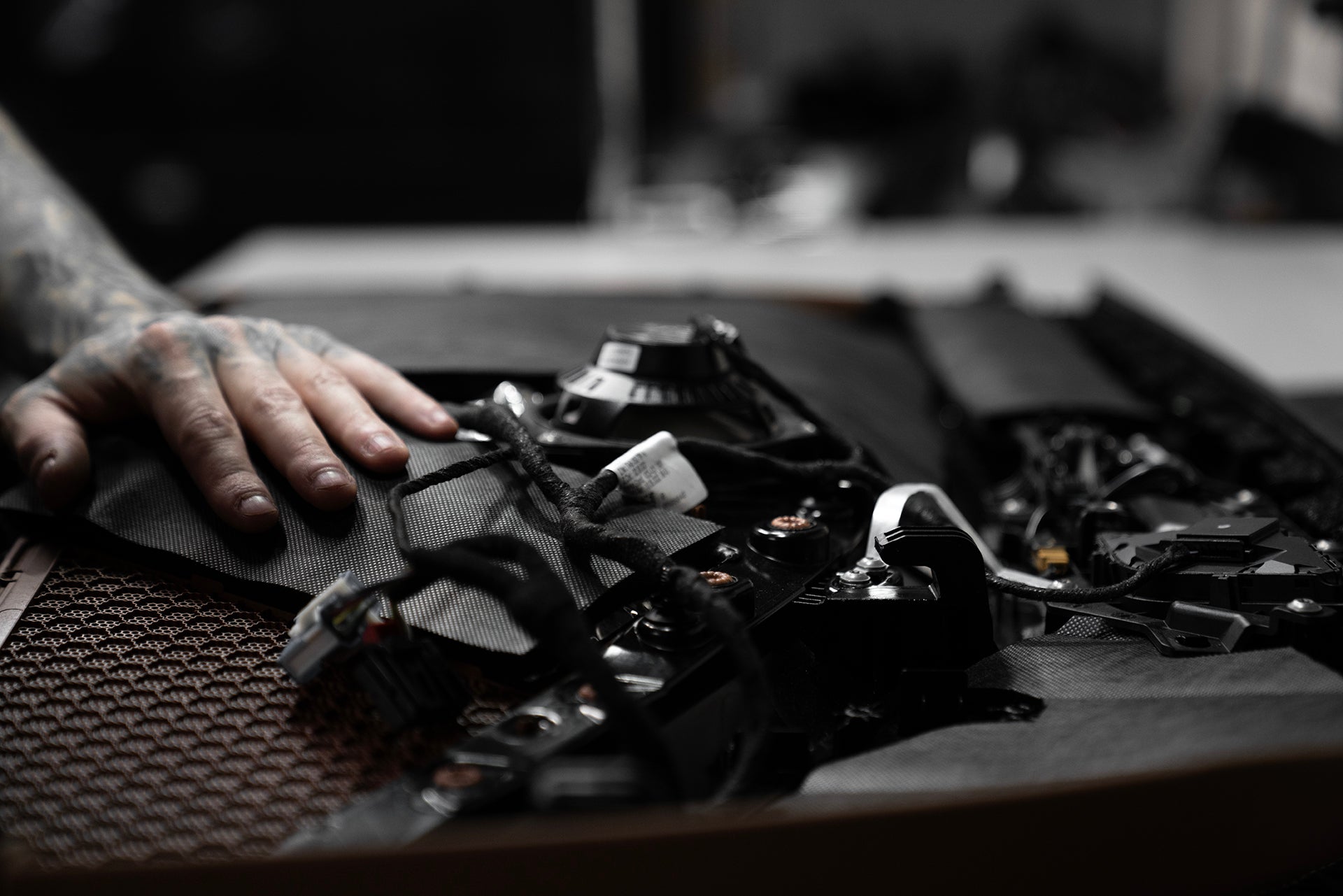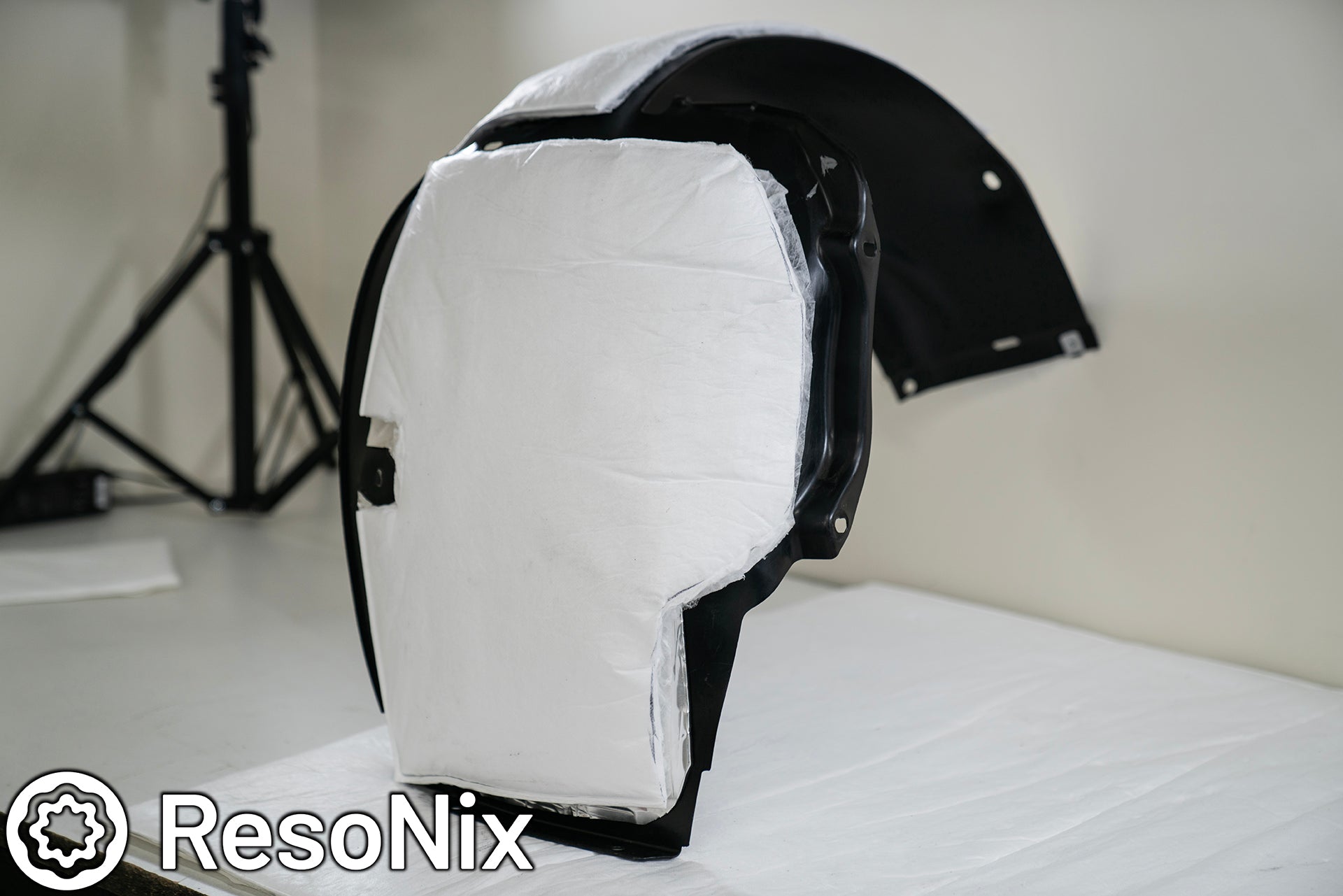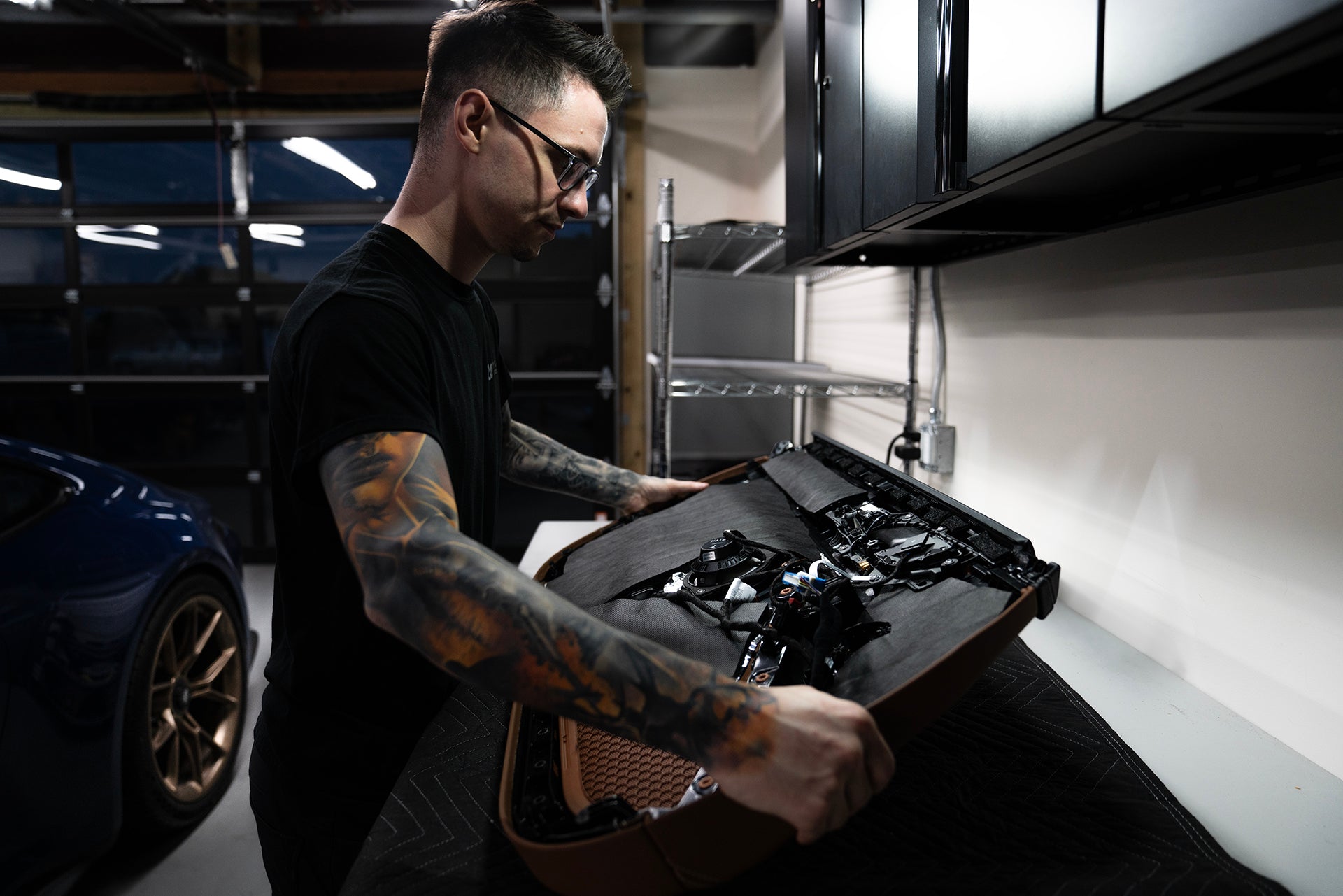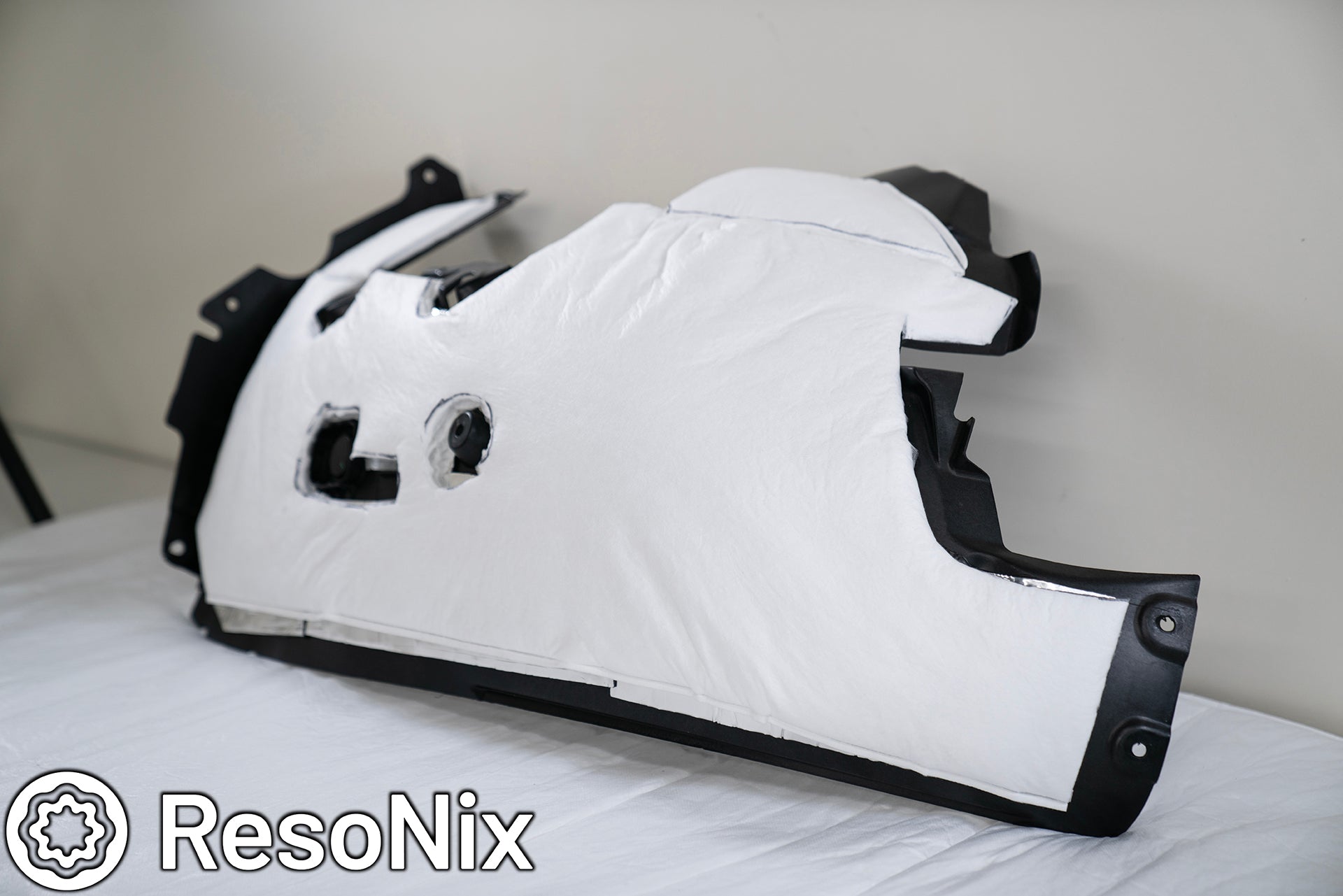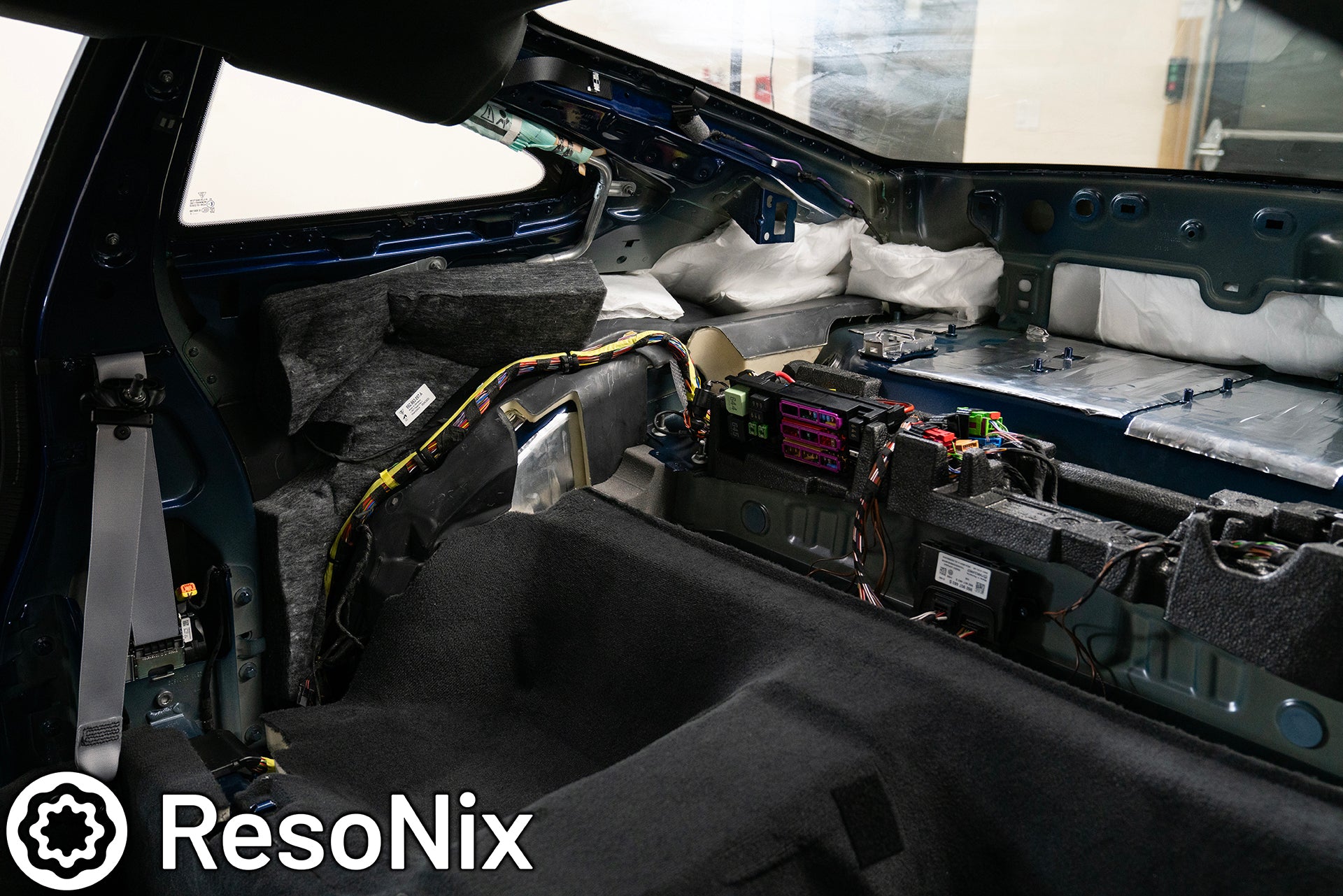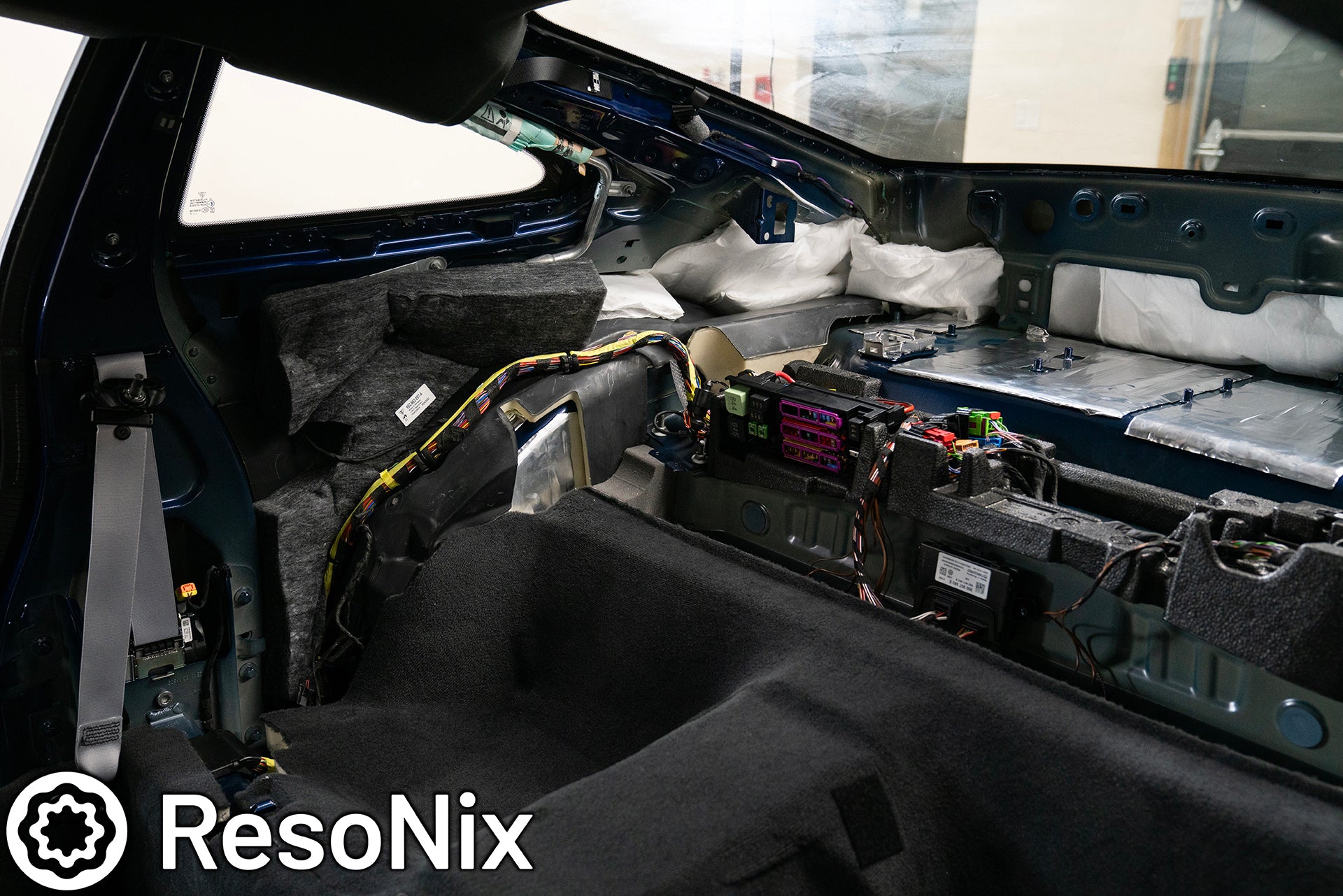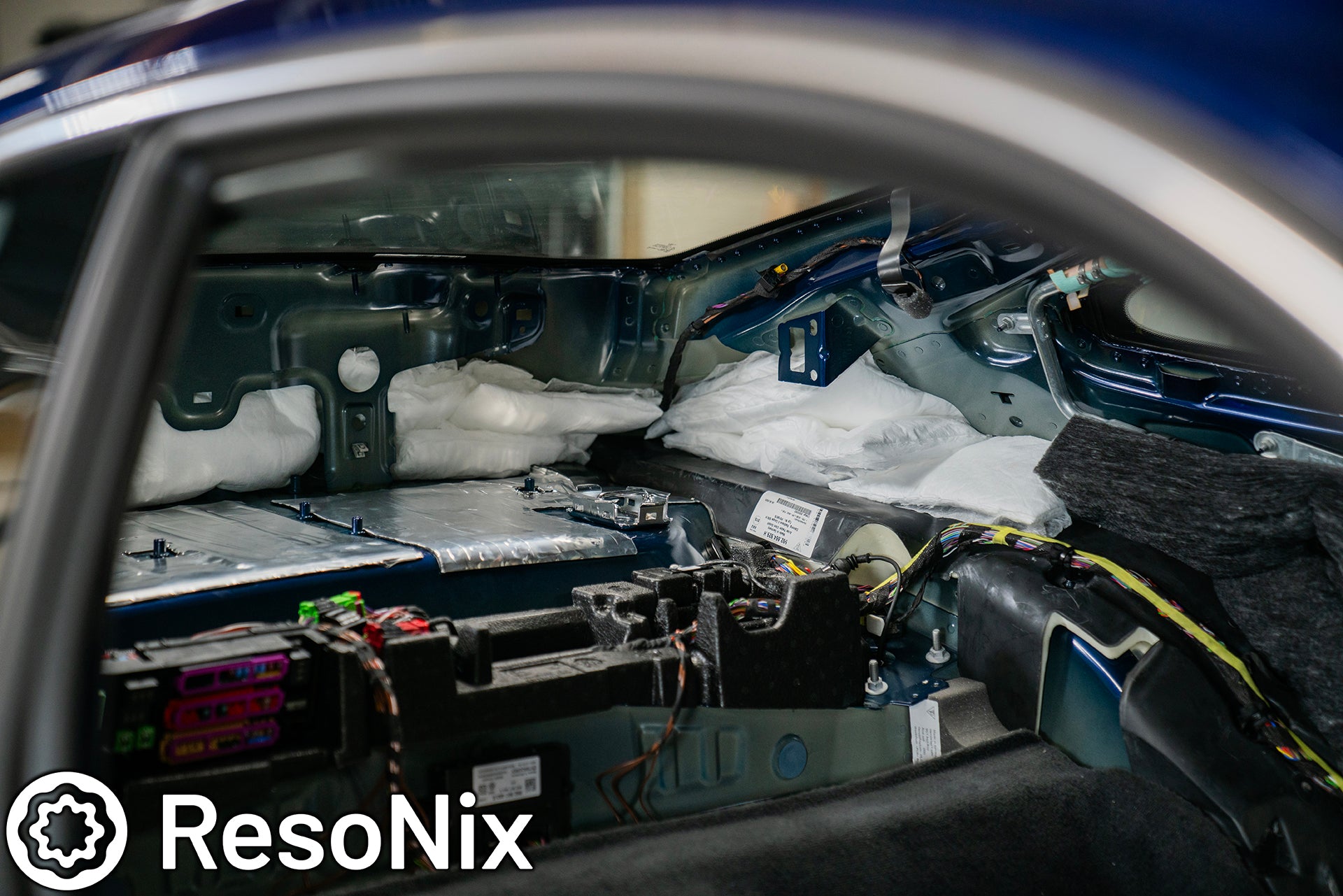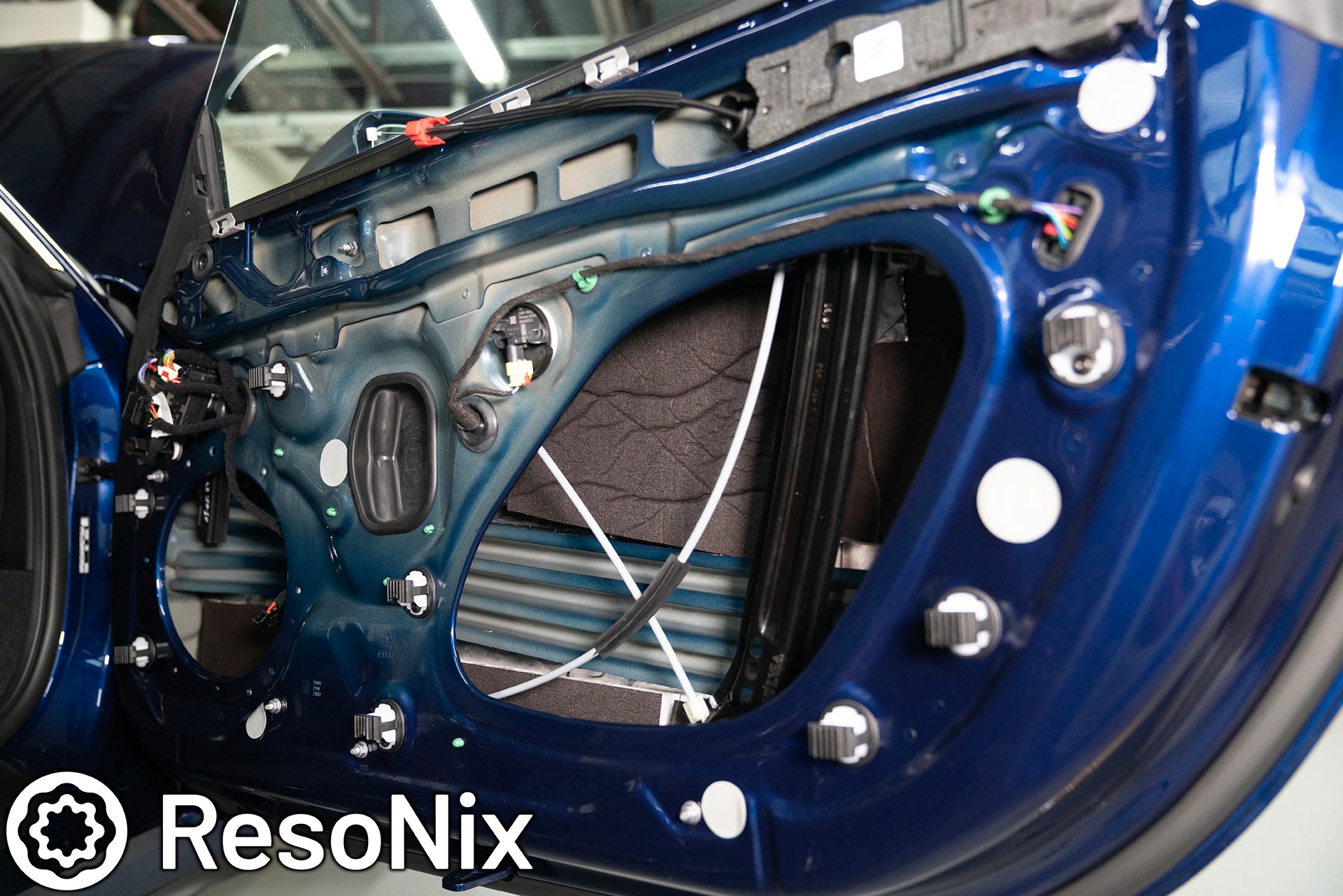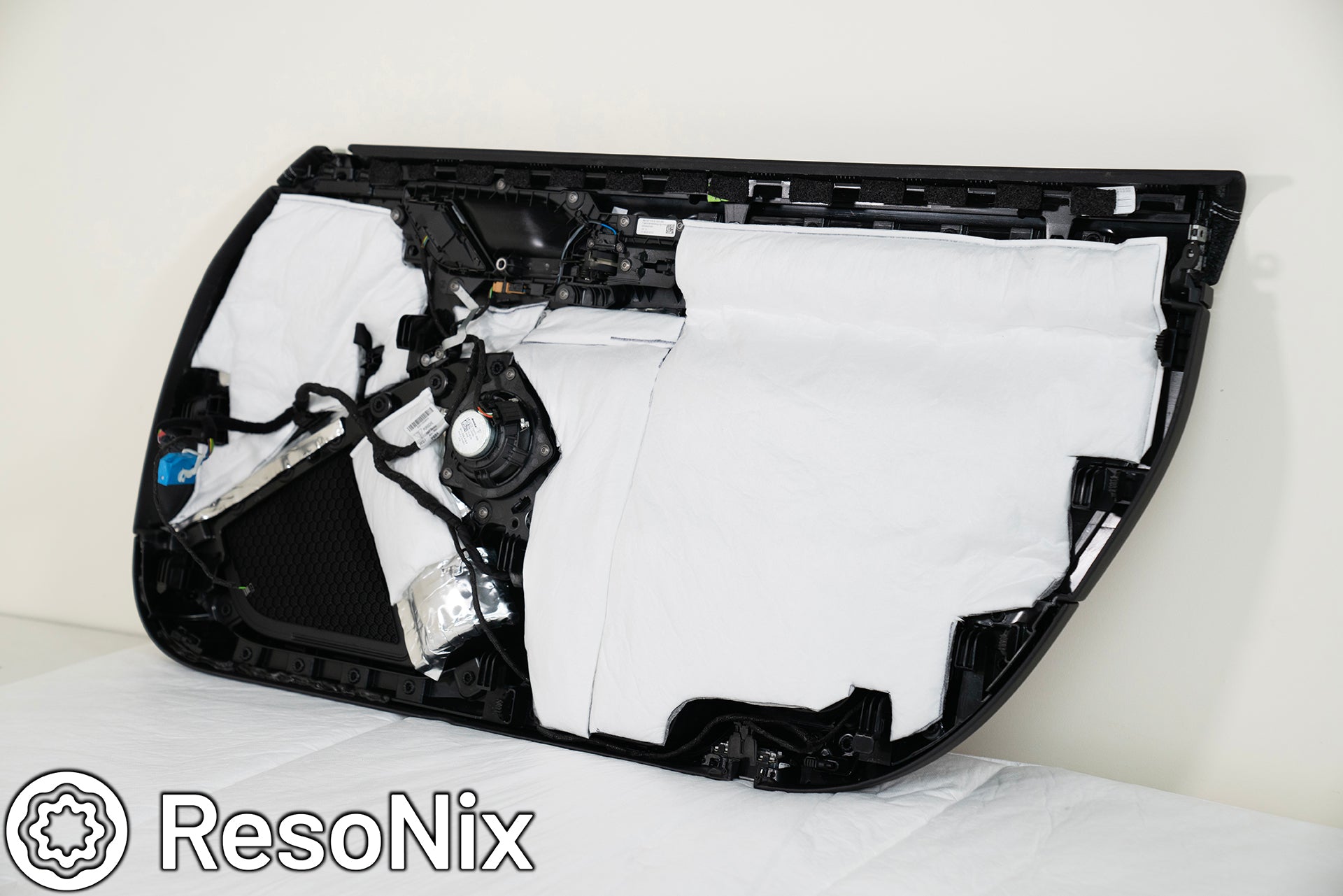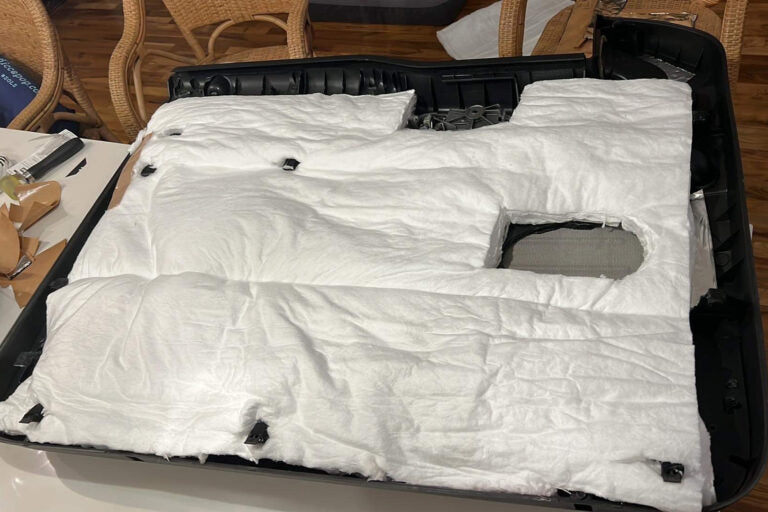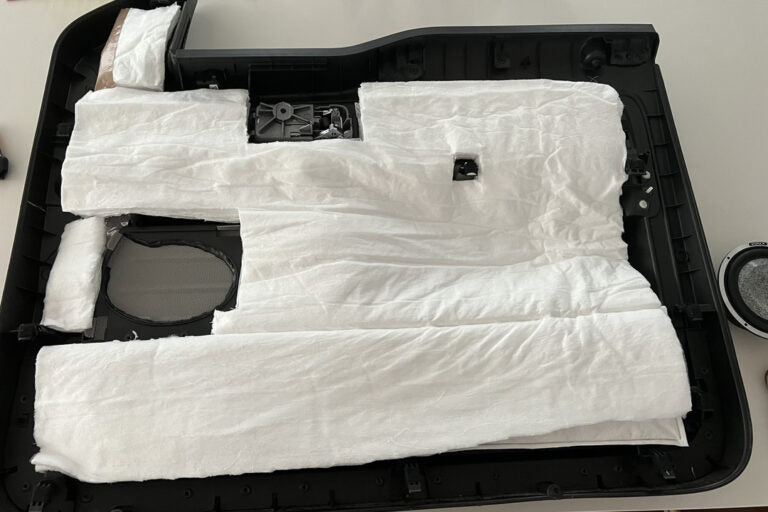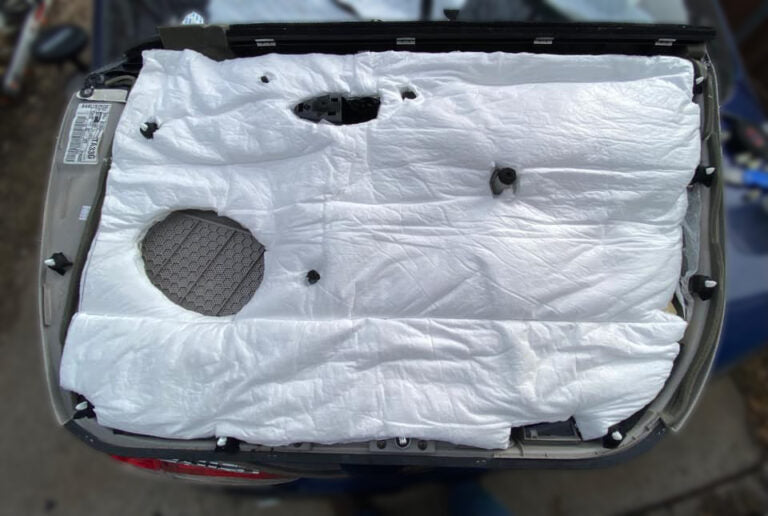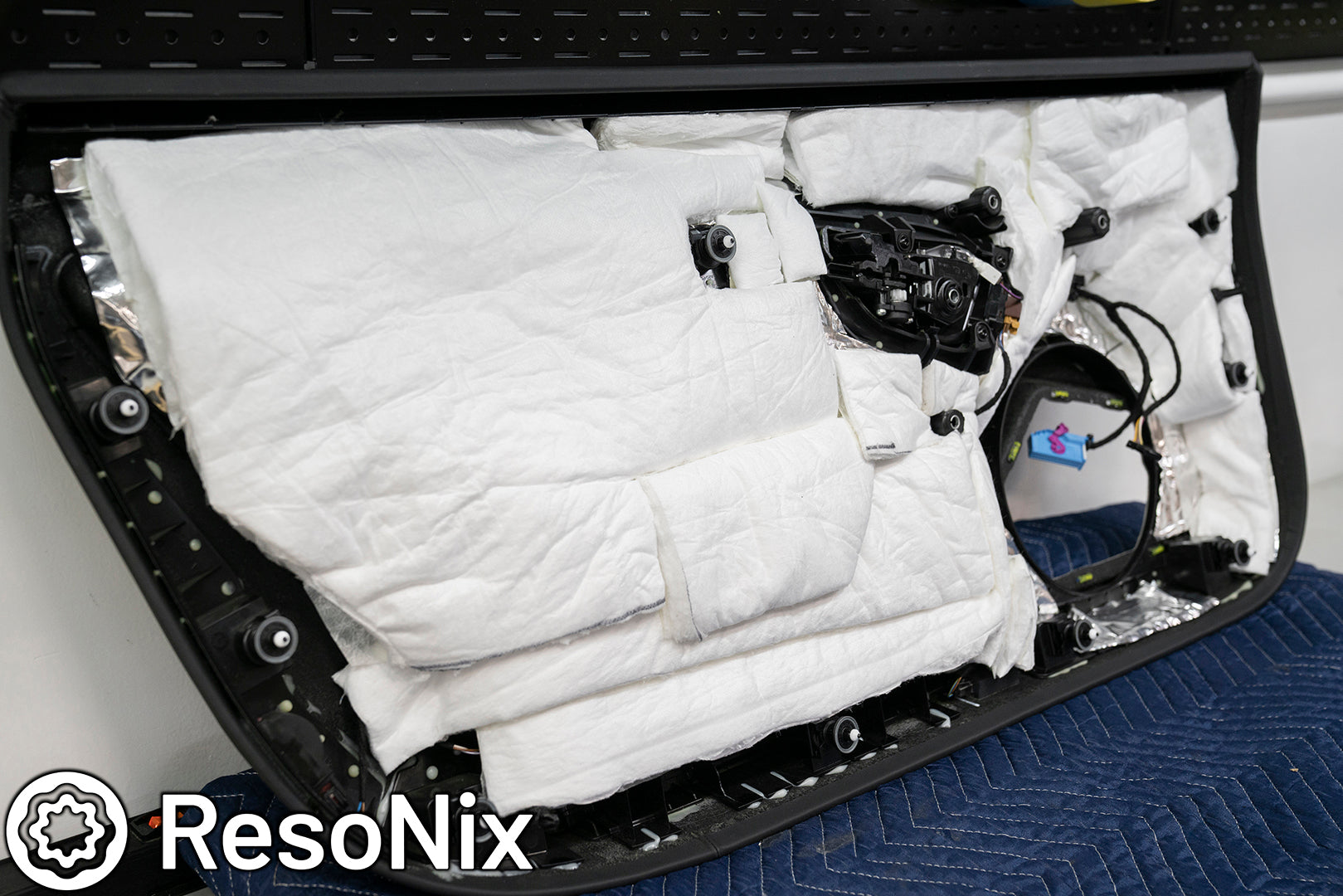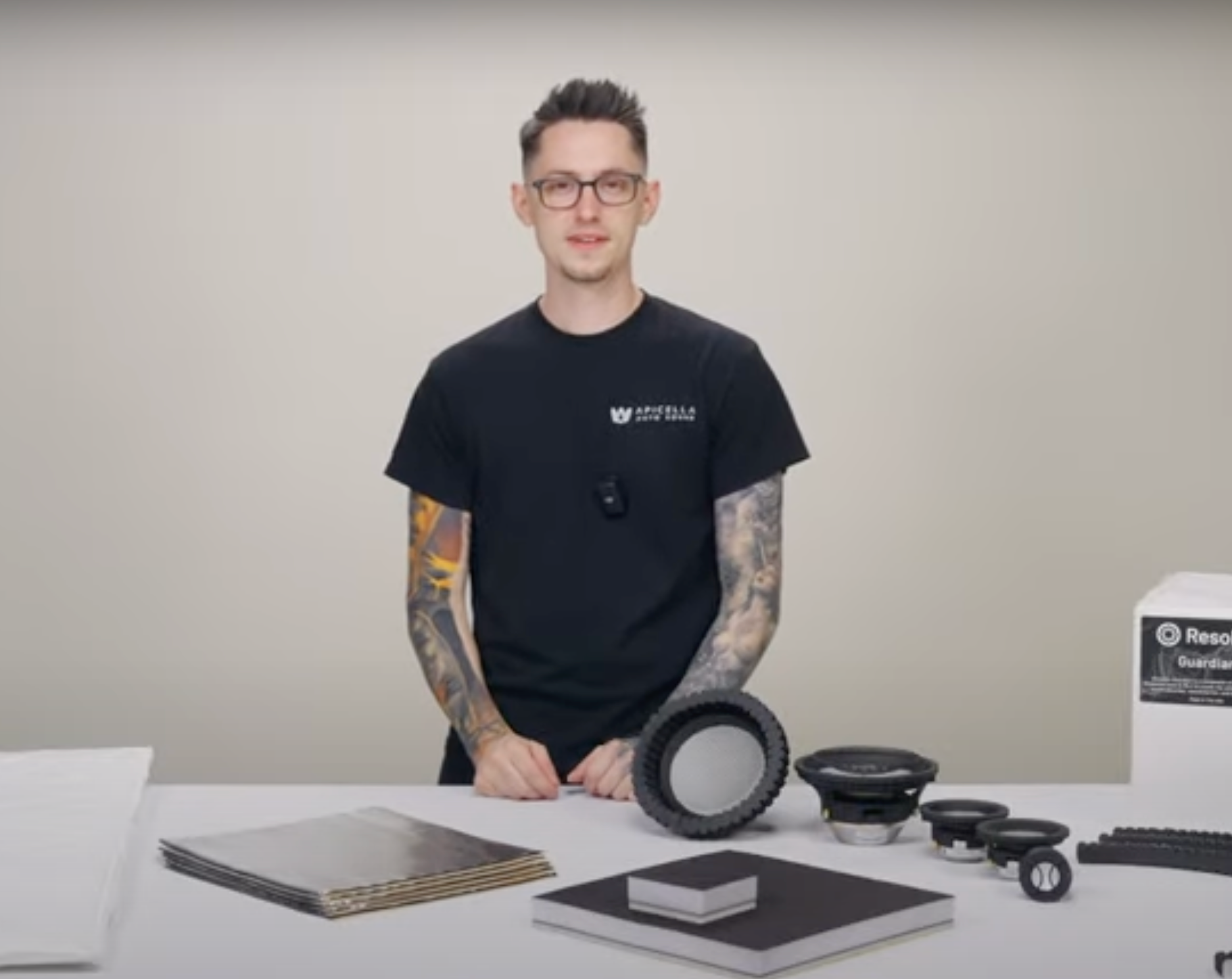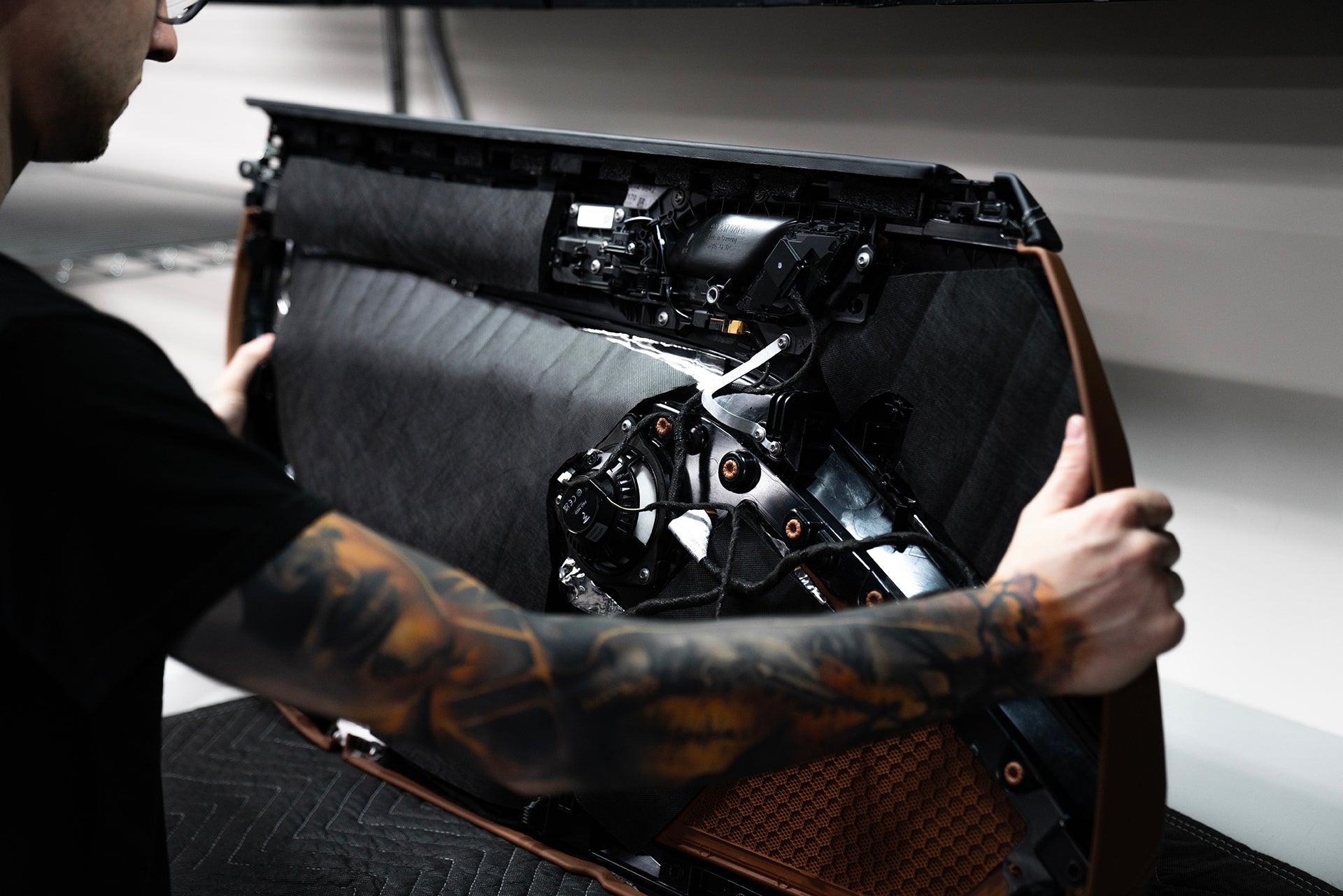
Automotive Sound Deadening Materials Information & Guide
This guide contains everything you need to know about how automotive Sound Deadening & Sound Treatment products work and how to use them.
HOW SOUND DEADENING WORKS
Overview
Unfortunately, there is a lot of misinformation and marketing fluff out there when looking for information on properly sound deadening your vehicle. I’m writing this to clear up any misconceptions about installing any sound treatment to your car, as well as provide an easy-to-follow, step-by-step guide that doesn’t misguide you for one reason or the other.
For starters, there are four main categories for sound treatment for your vehicle. The first one, your standard Constrained Layer Damper Sound Deadening Material, is to control structure-borne vibration, also known as resonance. Constrained Layer Dampers, usually referred to as CLD, are the most common type of product to handle this job. The second category, Vibration Decouplers, is to decouple panels and prevent them from vibrating against each other. A typical product for this is Closed Cell Foam (aka CCF) or Fiber Mat. Speaking of ResoNix Fiber Mat, up next is Sound Absorbers. This is something relatively less spoken about but it can yield significant improvements to your vehicle. Using modern materials such as our ResoNix Fiber Mat, a relatively inexpensive and very lightweight product, you can drastically reduce noise in your vehicle with ease. The last category of sound treatment for your car is blocking outside noise with Noise Barriers. For this, you need something with mass. ResoNix Barrier is a modern solution to a variety of problems when trying to block outside noise. Keep reading to learn all about how these types of products are used and the science behind how they reduce the overall noise floor of your vehicle.
Remember, all of these products work as a system. There is not one product that handles everything, and there is not a situation where using only one of these products will yield the best results possible. Read on to learn more about how they all individually work, and how they work together.
AN OVERVIEW OF FUNCTIONALITY
General Synopsis Of Sound Deadening Materials & How They Work
Please note that this is just a quick explanation that leaves out much detail for the sake of keeping things quick and simple. The more detailed "deep dive" section below covers EVERYTHING and should be read if you genuinely want to understand everything about these materials, how they work, and how they are used.
Constrained Layer Damper (CLD) materials, like ResoNix CLD Squares or ResoNix Mega CLD Squares, reduce structural resonance of panels. They consist of a visco-elastic butyl rubber layer bonded to an aluminum constraining layer. When panels that have a CLD applied flex (resonate), the butyl stretches and resists with shear forces due to the visco-elasticity of the butyl combined with the reference of the aluminum’s stiffness, converting mechanical energy into heat. Applied to metal and plastic panels such as doors, trunk lids, floors, various trim panels, and roofs, CLD is typically the first sound treatment used.
In car audio, CLD prevents rattling and resonance from powerful speakers, reducing distortion and improving sound quality. During regular driving, it reduces noise from wind, turbulence, and mechanical vibrations, lowering the overall noise floor. Larger, continuous pieces are more effective than multiple small ones, and only one layer is necessary for effective damping.
CLD does not block external noise but reduces the resonance of the panels it covers. It should not be heated during installation, and surfaces must be clean for proper adhesion. High-quality CLD resists melting and maintains performance at high temperatures; low-quality products may melt, off-gas, and have reduced damping effectiveness. Avoid products that come in rolls or have embossed patterns, as these can compromise the material’s performance.
Specifically designed to lower structure-borne vibrations, CLD will not block road noise or prevent panel-on-panel vibration by itself. Roofing products from big box stores are unsuitable substitutes, lacking the necessary visco-elastic properties and potentially being toxic. Investing in high-quality CLD materials from reputable companies ensures better performance and longevity, avoiding issues associated with cheaper alternatives.
In summary, properly applied CLD reduces vehicle panel resonance, improving audio quality and reducing noise generated by the vehicle itself. Use single layers of large pieces on clean surfaces without heating the material. High-quality CLD offers superior performance and durability, making it a worthwhile investment over lower-quality options that may fail under automotive conditions.
Vibration Decouplers and Sound Deadening Foams prevent rattles between vehicle panels by cushioning them and providing an air gap for noise barriers. Modern decouplers like ResoNix Fiber Mat use fibrous materials that can outperform traditional closed-cell foams (CCF). Closed Cell Foams, such as ResoNix CCF Decoupler still are a better option for tight tolerance areas though. Ideal decouplers are thick enough to fill gaps but compressible to avoid hindering reassembly; key properties are low Compression Deflection and Compression Set, measured by ASTM D 1056. High-compliance materials like ResoNix CCF Decoupler 7S (maximum 1 psi) are preferable over stiffer options that are found in every other aftermarket automotive sound deadening foams (which are typically made out of cheap ensolite foams), or god forbid gym mats which some inexperienced/uneducated hobbyists are occasionally suggesting, which are unsuitable due to high compression deflection.
Installation is simple: cut the decoupler to size and apply it with peel-and-stick adhesive, preferably attaching it to the trim panel for better serviceability. Use ResoNix Fiber Mat for larger areas and smaller CCF Decouplers for tight spaces. Avoid open-cell foams or materials like shredded denim, as they retain moisture and can cause mold. Also, be cautious of products/companies that falsely claim that their foam sound deadening material blocks or absorbs noise; closed-cell foam does not significantly perform these functions due to their lightweight and closed-cell nature.
In summary, selecting appropriate high-compliance decoupling materials and proper installation effectively eliminate rattles and enhance the vehicle’s acoustic environment without relying on misleading claims about noise absorption or blocking capabilities.
Automotive sound absorbers are essential materials used to reduce unwanted noises inside a vehicle, such as wind, engine, exhaust, and tire sounds. They function by converting airborne sound energy into mechanical and thermal energy, thereby lowering the overall noise level within the cabin. This process involves materials that absorb sound waves through microscopic deformation or friction as the sound passes through them.
Sound absorbers typically utilize fibrous or porous materials. Fibrous materials absorb sound by allowing sound waves to enter and cause the fibers to vibrate and deform at a microscopic level, dissipating the sound energy as heat. Porous materials have interconnected pores that let sound waves enter and create friction, which also converts sound energy into heat. The effectiveness of a sound absorber depends on several factors:
- Frequency of Sound Waves: Higher frequencies with shorter wavelengths are easier to absorb, while lower frequencies with longer wavelengths require thicker materials for effective absorption.
- Thickness of the Material: Thicker absorbers can handle lower frequencies more effectively because they provide more material for the sound waves to interact with.
- Material Properties: The density and absorption coefficients of the material influence how well it absorbs different frequencies.
Sound absorbers are used in various parts of a vehicle to address specific noise issues. They are commonly installed behind door panels to reduce external noises like traffic and wind, enhancing the audio quality inside the cabin. Applying absorbers to the roof area minimizes rain and wind noise, improving comfort during adverse weather conditions. Floors and wheel wells are close to sources of tire and road noise; adding absorbers here can significantly reduce these sounds. Pillars and quarter panels, which can transmit vibrations and noise, also benefit from the application of sound absorbers.
The benefits of using sound absorbers in vehicles are numerous. They are generally cost-effective compared to other noise reduction methods like installing noise barriers. Their ease of installation is another advantage; sound absorbers do not require perfect coverage or precise installation techniques. Any amount added contributes to noise reduction, making them accessible for do-it-yourself applications. By reducing unwanted noises, sound absorbers enhance the overall sound quality of the vehicle’s audio system and increase passenger comfort.
When selecting sound absorbers, it is important to choose materials suitable for automotive environments. Materials should be resistant to heat and moisture and should not promote mold or mildew growth. Avoid using generic acoustic foams, shredded denim, or jute, as these can retain moisture and degrade over time. Proper thickness should be selected based on the frequencies you aim to absorb—thicker materials for low-frequency noises and thinner ones for high-frequency sounds.
Installation should be done carefully to avoid over-compressing the material, as compression reduces its ability to absorb sound. Sound absorbers should be installed in a way that allows them to remain as uncompressed as possible. Placement is also important; while absorbers can be effective in many areas, they should be kept away from moving parts or mechanisms to prevent interference or damage.
In summary, automotive sound absorbers are an effective solution for reducing airborne noise inside vehicles. By understanding how they work and strategically placing them in areas where noise reduction is most needed, vehicle owners can enhance the driving experience by creating a quieter cabin environment. Selecting the right materials and installing them properly ensures maximum effectiveness while avoiding issues like mold growth or reduced efficiency due to over-compression.
Noise barriers, such as ResoNix Barrier, are materials installed in vehicles to block external sounds like tire, engine, exhaust, and wind noise from entering the cabin. They work by providing a heavy, non-resonant mass that reflects or deflects acoustic energy away from the interior space. The effectiveness of a noise barrier depends on its weight and inertness—the heavier and more non-resonant the material, the better it blocks sound.
Unlike sound absorbers, which convert sound energy into heat, noise barriers prevent sound waves from passing through by reflecting them elsewhere. Due to this, for optimal performance, noise barriers require complete coverage without gaps; even small openings allow sound to bypass the barrier, greatly reducing effectiveness. This is similar to how a partially closed window doesn’t significantly reduce outside noise.
Proper decoupling is crucial. The noise barrier must be isolated from the vehicle’s body and interior panels using a soft material like closed-cell foam. This prevents vibrations from being transferred to the barrier, which would cause it to resonate and diminish its sound-blocking properties.
Materials like Mass Loaded Vinyl (MLV) are commonly used but can be thick and difficult to install in modern vehicles with complex shapes, while ResoNix Barrier is much thinner, moldable, and much easier to work with while also being more effective than traditional MLV-based products. Noise barriers are most effective in areas where full coverage is feasible, such as the vehicle’s floor. Treating only isolated areas is usually ineffective because sound will find paths through untreated sections, but there are some rare scenarios where it can work.
In summary, when properly installed with full coverage and decoupling, noise barriers effectively block external noises from entering the vehicle’s cabin, significantly enhancing the driving experience.
ResoNix Strips
ResoNix CCF Strips are a product that is used to couple your car speakers to the panel and grille that reside in front of them. The purpose is to direct all acoustic energy created by the speaker through the grille into the listening space instead of losing acoustic energy to the open areas behind your door panels and dash panels. This has two main benefits. First, we gain more output since we can force all acoustic energy into the listening space. The second is less resonance and distortion created by the panels themselves since the acoustic energy is no longer getting trapped behind and exciting the panel. They also provide minor stability for the panel they are coupling to. Long story short, install these around your speakers, especially midbass speakers for a free lunch of more volume, lower distortion, and fewer rattles and resonance.
ResoNix Butyl Rope
ResoNix Butyl Rope is precisely what it sounds like. It is a 3/8″ diameter butyl rope used for various sound treatments in your vehicle. Two popular uses include stuffing it between the crash bar and outer door skin to help further stabilize the outer skin, and using it in small areas where two layers of a panel may overlap and introduce the possibility of them rattling together. It can also be used on the base of clips to prevent them from rattling. See the product page for installation examples.
OEM Audi/VW Interior Non-Woven Tape
This “cloth tape” is commonly used in installations for various reasons. But for sound treatment purposes, you can use it to bundle wire harnesses that reside behind panels to prevent them from rattling and buzzing, or you can use them on clips and/or clip openings to help reduce their vibrations. The difference between the tape we sell and the popular option, ours will not turn sticky and gooey over time. See the product page for installation examples.


